THEATER
THEY AREN’T KITTEN AROUND PAGE 24
THE AROMA OF AREPAS
Peekinto the 20-year relationshipbetween the flm festival and our community.
Page 16














THEATER
THEY AREN’T KITTEN AROUND PAGE 24
THE AROMA OF AREPAS
Peekinto the 20-year relationshipbetween the flm festival and our community.
Page 16














I’ve been a student for as long as I can remember. But as I get closer to leaving school, it feels like I’m facing the largest test of all. I came to journalism as a writer. Now, as a graduate student working daily with students to write this city’s stories, I know I’m meant to be here. The art of words and trust it takes to produce Vox each month is the motor that keeps me going. It’s a motor that I’m trusting as I look ahead toward this new test: Who will I be when I’m not a student? How will I pace myself and measure my life according to who I am, and not just what I do?
“This Is a Test” is the theme for the 2023 True/False Film Fest (p. 16), which is fitting when you think about the grueling trials of the past few years. The pandemic has become a constant hum in our everyday songs, and to some, a pounding drum that no one else seems to notice anymore.
These trials shape us all uniquely, just like this year’s True/False Film Fest theme involves many individually designed arrows fusing together in
a chaotic mosaic of green and yellow and blue. Yet the arrows are connected by lines snaking throughout — more than 150 contributors somehow finding cohesion — albeit a little messy.
How will we find cohesion, too? As we seek equity and ground ourselves in our values, even if it feels like we’re doing so in ever-shifting sands, is there a chance for us to make the messiness charming?
That’s an approach the Backstreet Gals are finding in this issue’s feature about the feral cat conundrum in mid-Missouri (p. 24). Our tips for finding help during a therapist shortage (p. 35) offer a similar makeshift perspective to an otherwise discouraging reality. The story behind Blake Brown’s BTB Kicks business (p. 33) is an inspiring reminder of what it means to find your way using your passion as your guide.
I’m betting on my own passions being a North Star to guide me through this last semester of formal schooling. Hopefully, we’re all getting in touch with the motors that will take us through the test.
EDITOR-IN-CHIEF KATELYNN MCILWAIN
MANAGING EDITOR ABBEY TAUCHEN
DEPUTY EDITOR KRISTINA ABOVYAN
DIGITAL MANAGING EDITOR MARISA WHITAKER
AUDIENCE ENGAGEMENT EDITOR GRACE KENYON
CREATIVE DIRECTOR HEERAL PATEL
ART DIRECTOR CAMPBELL BIEMILLER
PHOTO DIRECTOR SYDNEY LUKASEZCK
MULTIMEDIA EDITOR HALLE JACKSON ASSOCIATE EDITORS

CULTURE JESSE BERLIN, LAUREN BLUE, LAUREN HUBBARD, EMMA LINGO, AMILEE NUZZO, KEARA SHANNON, MAX SHAPIRO
EAT + DRINK CHLOE KONRAD, NIA MARTIN, MELANIE OLIVA, PETRA RIVERA, ANNASOFIA SCHEVE, TAYLOR WILMORE
CITY LIFE ADAM ALLSBURY, CORINNE BAUM, ASHLEY BUTLER, SOPHIA DONIS, ABBY STETINA, TRINIDY THOMPSON, KAITLYN ZOGLMANN JENKINS
STAFF WRITERS MARA DUMITRU, TATEN JANES, SOPHIA KOCH, CHARLIE RECCHIA, KHALIA SMITH, JANE STEINBRECHER, SAM WILLS, CAYLI YANAGIDA
SOCIAL & AUDIENCE OLIVIA HOLLER, AINSLEY LOWTHER, IRELAND SHELTON, MEREDITH WENDLING, SHANNON WORLEY
CONTRIBUTING WRITERS KARLY BALSLEW, GRACE ANN NATANAWAN, MCKENNA NEEF, NATALIE-ELIZABETH TAN, JORDAN THORNSBERRY, AUSTIN WOODS
DESIGNERS SIREEN ABAYAZID, LIN CHOI, ASPEN GENGENBACHER, AVA HORTON, JACEY JOHNSON, MEGAN SYDOW
Katelynn McIlwain Editor-in-Chief
Call me a crazy cat lady all you want — but I bear that title with pride. My story on feral cats (p.24) originated in my own backyard when a black cat started to slink around in the evenings. He looked just like my little guy, Felix, and I was absolutely heartbroken. Where was his owner? Who fed him? I got to thinking about the Columbia cat lovers who work to help community cats. Without their efforts, cats would run rampant. Initially, that didn’t sound so bad to a cat fanatic like me, but I quickly learned that the delicate relationship of wildlife, humans and cats would tip in favor of a kooky cat colony without their help. I hope you find useful information in my story, and tell your cat I said pspspspsp Abby Stetina
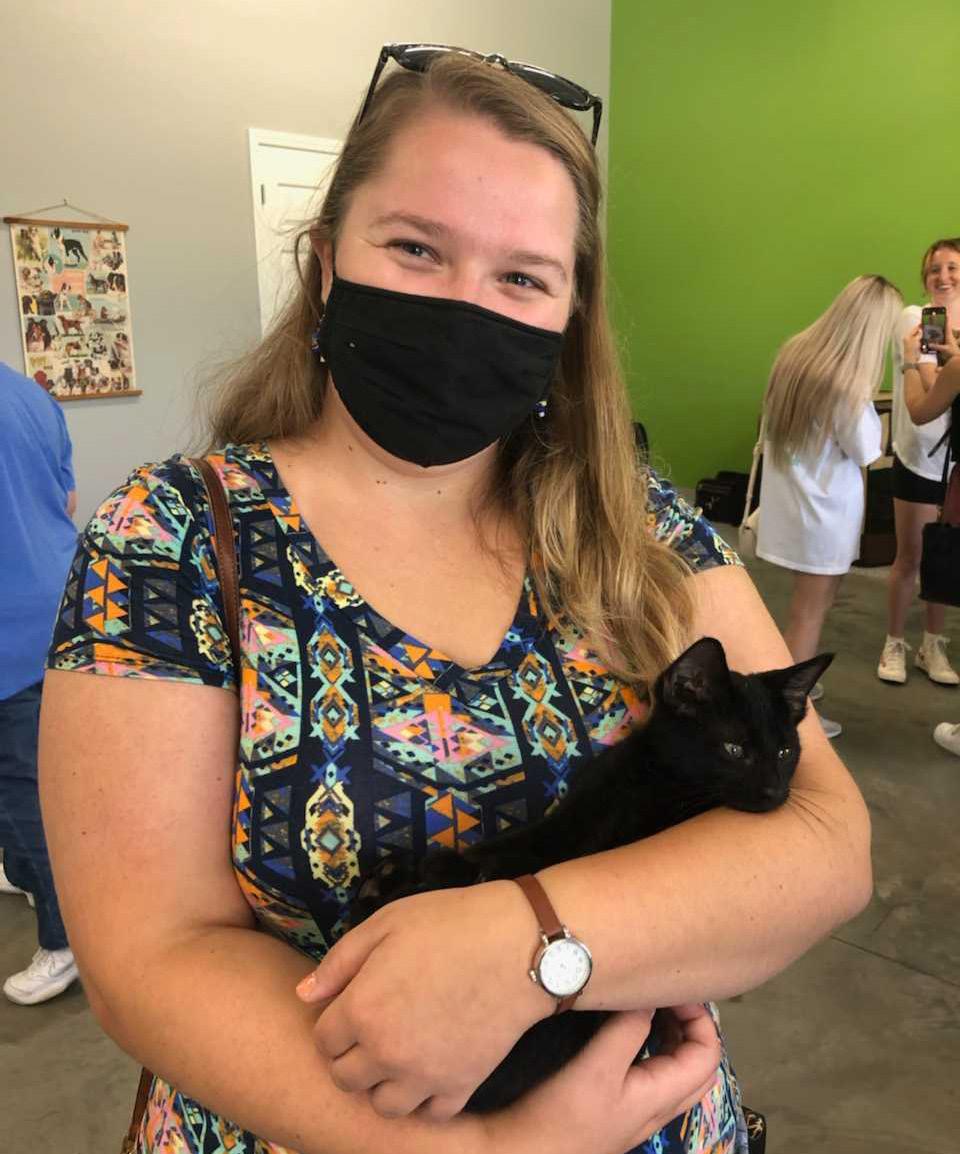
EDITORIAL DIRECTOR HEATHER ISHERWOOD EXECUTIVE EDITOR LAURA HECK
SENIOR EDITORS CARY LITTLEJOHN, JENNIFER ROWE OFFICE MANAGER KIM TOWNLAIN
FOLLOW US
Vox Magazine @VoxMag @VoxMagazine
WANT TO BE IN-THE-KNOW?
Sign up to receive Vox ’s weekly newsletter, the “Vox Insider.” We’ll tell you how to fill up your weekend social calendar and keep ahead of the trends. Sign up at voxmagazine.com.

CALENDAR send to vox@missouri.edu or submit via online form at voxmagazine.com
884-6432
MARCH 2023 VOLUME 25, ISSUE 2 PUBLISHED BY THE COLUMBIA MISSOURIAN
EAT + DRINK
29
We all eat arepas
Where your morning coffee meets Venezuelan food on Providence Road.
31
Be their neighbor
The Leitza family’s restaurant serves up hometown taste to the community. CITY
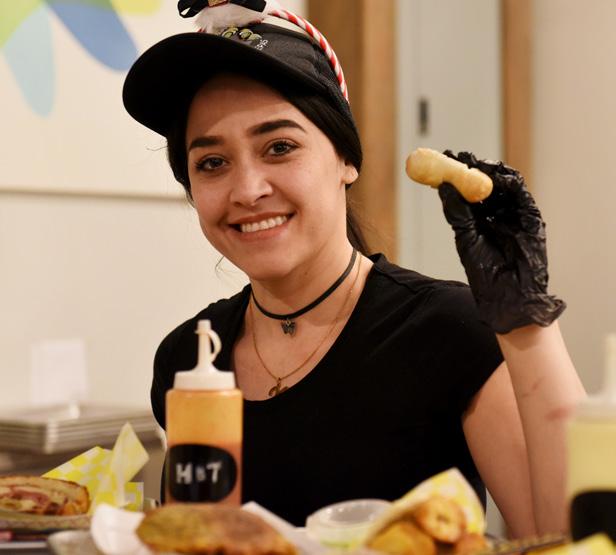
33
The sole doctor MU student and entrepreneur builds a cleaning

35
for your kicks.

When help is hard to find Local experts talk alternative options during a therapy drought.
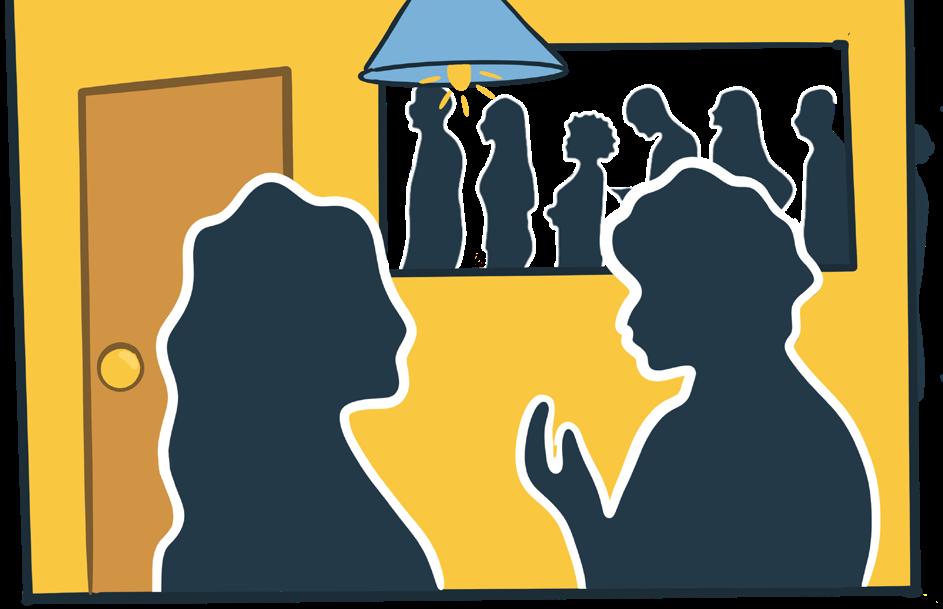
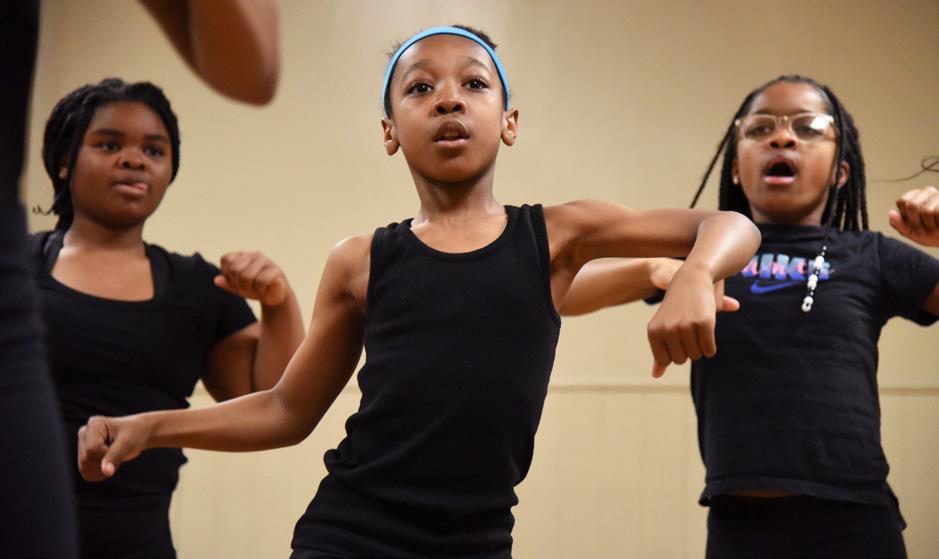
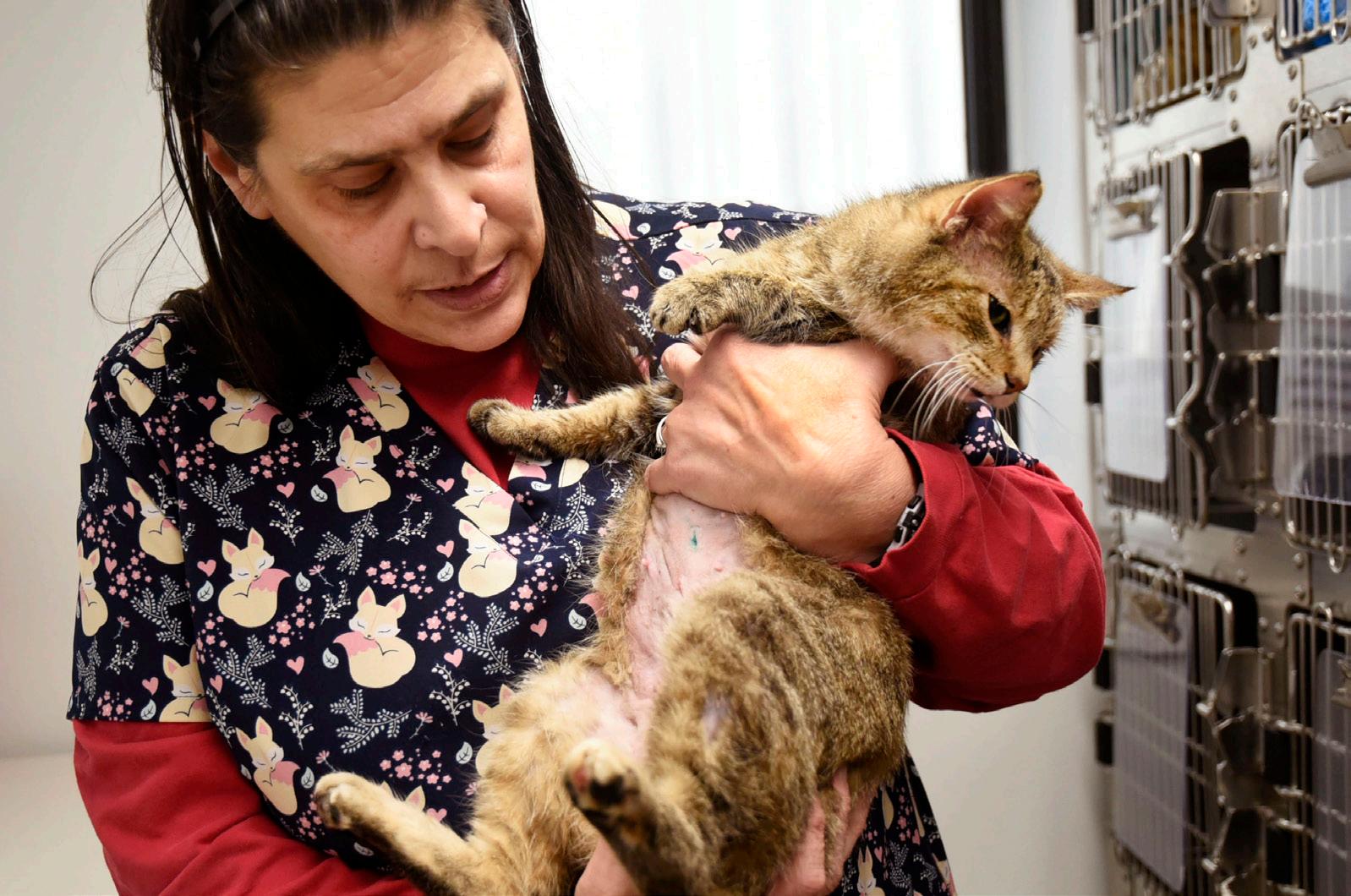


 BY LAUREN BLUE
BY LAUREN BLUE
When Instagram launched on Oct. 6, 2010, it garnered immediate buzz. The app attracted nearly 1 million users within the first couple months. Today, Instagram has over 1.28 billion active users, according to market and consumer data website Statista, and has become the platform of choice for many creatives. It’s also where Maya Robinson found her love for social media.

Robinson was fascinated with content creation — not just her own — but how other people brought their ideas to life as well. She says she wished Columbia had a space for social creators to collaborate like she saw happening in other cities, so she posted a time, date and location on social media for the first meeting of Dream Club, a collective of local content creators. Almost four years later, Dream Club has grown to offer Columbia content creators a safe, judgment-free zone to create content, meet others in their field and build confidence.
Robinson says confidence is extremely important in the content creation industry, and it is “a muscle you have to exercise.” That confidence is what gets people to their first meeting, where they can get in front of or behind the camera and put themselves in a place to collaborate and network. Dream Club is a safe space that
helps build this self-assurance and encourages members to face their fears and overcome social anxiety, Robinson says.
Photographer and Dream Club member Madison Green echoes Robinson’s sentiment about confidence. “It doesn’t matter what you look like or where you come from — confidence is what radiates,” Green says. “It’s so important in the creative industry, especially when it comes to modeling and photography, because that confidence is how you are going to produce the best work.”
She says Dream Club has been a huge ego booster because she can see the models’ reactions to how her photography made them feel. She finds that meetings provide a lot of positive affirmations that are purposeful, with everyone cheering each other on, giving out compliments and getting out of their comfort zones.
After her first nerve-wracking meeting, Lena Samford, a photographer in Dream Club, says the club helped her networking skills, but it also taught her an even more important lesson about

Find

confidence. “I was able to learn how to be in a space that I was not comfortable in and then feel confident in that, which is a really valuable thing,” she says.
An Insta-fam
Brendan Hawkins, a Dream Club member, describes the club as a family and says the culture is always positive and welcoming. “Maya is phenomenal,” Hawkins says. “If she has some opportunities come about, she always spreads the word and sees if anybody (is) interested.”
Robinson also wants creators to meet and understand “the person behind
the post” at these meetups and to focus on the act of creating instead of the end product. She says there can be a stigma surrounding the term “content creator,” and this community helps creators have a more intimate and supportive relationship with others in their field.
Ultimately, Robinson says Dream Club is a space where members can feel seen and understood in their creative outlet.
“It takes courage to be vulnerable and show up and not know exactly what’s going to happen,” Robinson says. “I think having a safe space to express that or explore that is really what we have to offer.”
Each month, reads and experiences. We find the new, trending or underrated to help you enjoy the best our city has to offer.
BY VOX STAFF
Rising international film producer — and Hickman High School alum — Daniel Dreifuss hit the Dolby Theatre for his work on the nine-time Oscar-nominated Netflix film
Dreifuss is part of the production team nom inated for Best Production Design, Best Pic ture and seven other categories. The film is an adaption of the 1928 novel and the 1930 film, which won the Academy Award for Best Picture. The story follows a group of young Germans as they experience the brutality of World War I. Awards, 7 p.m., March 12 on ABC
With Joe Gatto, a comedian best known for his gags on the TruTV show Impractical Jokers, including loudly looking for “Larry!” In the


Felt by Numbers, which will be displayed at Orr Street Studios. Community Thread, Feb. 28 to March 24, Columbia Art League, 207 S. Ninth St.; Felt by Numbers, Feb. 27 to April 1, Orr Street Studios, 106 Orr St.
To Grammy-nominated country singer Hailey Whitters when she performs at Rose Music Hall. Whitters will be touring later this year with Nashville leg ends Shania Twain, Eric Church and Luke Bryan, performing her critically acclaimed album Raised. The album was recognized as one of the best country albums of 2022 by Bump along to some of her hit songs from the album, including “Ev erything She Ain’t,” which she recently performed on 8 p.m. March 5, Rose Music Hall, $15, rosemusichall.com
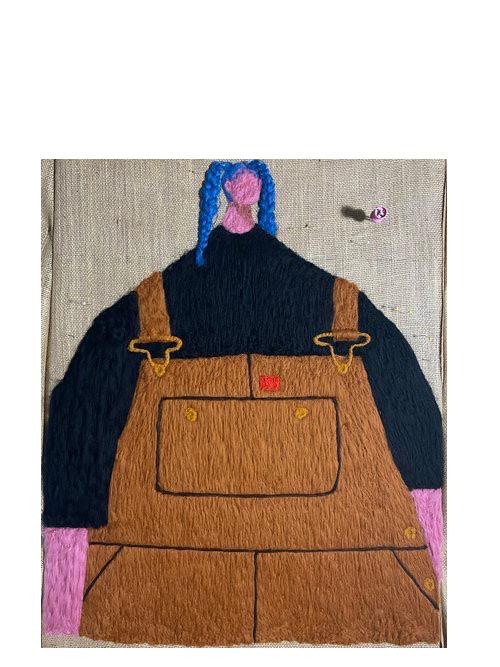
preter to attend a court hearing with them, so Kozbar offered her help. “They were very relieved to have somebody who can interpret their side of the story,” she says.
Since then, Kozbar has become a full-time interpreter at Columbia Public Schools where she translates parent-teacher conferences. In addition to this role, she is a medical interpreter who helps with scheduling, attends appointments and translates paperwork. “I work with a community that I can talk to and feel their pain,” Kozbar says. “There’s this communication with them when I visit them and when I’m with them. I just feel this part of my family.”
With an increase of refugees moving in the past decade, she says the need for interpreters was very obvious. “I always imagined myself going somewhere where I don’t speak the language. I don’t know the culture, I don’t know what to eat,” says Kozbar, adding that Muslims are restricted from consuming pork or alcohol. “(Having) someone to come and help me with all this and to tell me where to go, where not to go, what to eat and what not to eat. I’ll be so grateful to that person.”
Three Columbia-based interpreters help non-English speakers overcome language barriers and provide a sense of belonging in the community.
BY JESSE BERLINImagine going to the dentist and not being able to communicate about your toothache. Or having a parent-teacher conference at school and not understanding your child’s educator.
Migrants settle in new communities for a variety of reasons — jobs, families, war and climate crises are a few circumstances — but common threads weave through their experiences. Even saying “hello” to a neighbor can be a challenge. If everything is in a different language, migrants are typically left out of the conversation. That’s where interpreters change the narrative.
Three interpreters in Columbia say interpretation is more than just translating. It’s about making a personal connection with people when they need it the most. It’s also about giving them a
voice to advocate for themselves, as well as making them feel less alone.
These three interpreters discuss what it’s like to help bridge the gap between communities with language.
Growing up in Bahrain and studying in an American school, Zuhnia Kozbar considers English her second language. When she became the principal at the Islamic School of Columbia, Kozbar started interpreting to help non-English-speaking families enroll in courses.
Kozbar was called upon by a St. Louis company to interpret English for an Arabic-speaking family who had gotten into a car accident. The family needed an inter-
Zuhnia Kozbar, right, an Arabic interpreter, accompanies Mohammad Abaker to a dental appointment. Kozbar did not come to Columbia as an interpreter, but began this work after realizing there was a need in the community.

After starting her own interpreting company, Trusted Communications, Ana Garcia, realized she’d been interpreting long before she decided to make it her job.
As a child, Garcia was the link between her Spanish-speaking parents and an English-language country. “I was interpreting at my own parent-teacher conferences,” she says.
But this took away power her parents would’ve gained if they had someone other than their child to relay messages. “Whenever we get parents that are a lot more involved in their child’s education, it creates a better outcome for the child, and I think interpreters play a big role.”
For Garcia, interpreting is about advocating for people to have language access. Even if they don’t speak the same language as most of the community, they should still have a voice.
“We as interpreters are a tool that can help an individual that’s in need of bringing justice to themselves,” says Garcia, who adds that she has interpreted for victims of do-
mestic violence. Garcia has seen the relief in clients who know that, with her assistance, they have a way to speak for themselves.
Interpreters are crucial in the education, legal and medical fields. “We interpreters are needed all the time, everywhere,” Garcia says, “The idea of helping others is what made me want to go down this career path.”
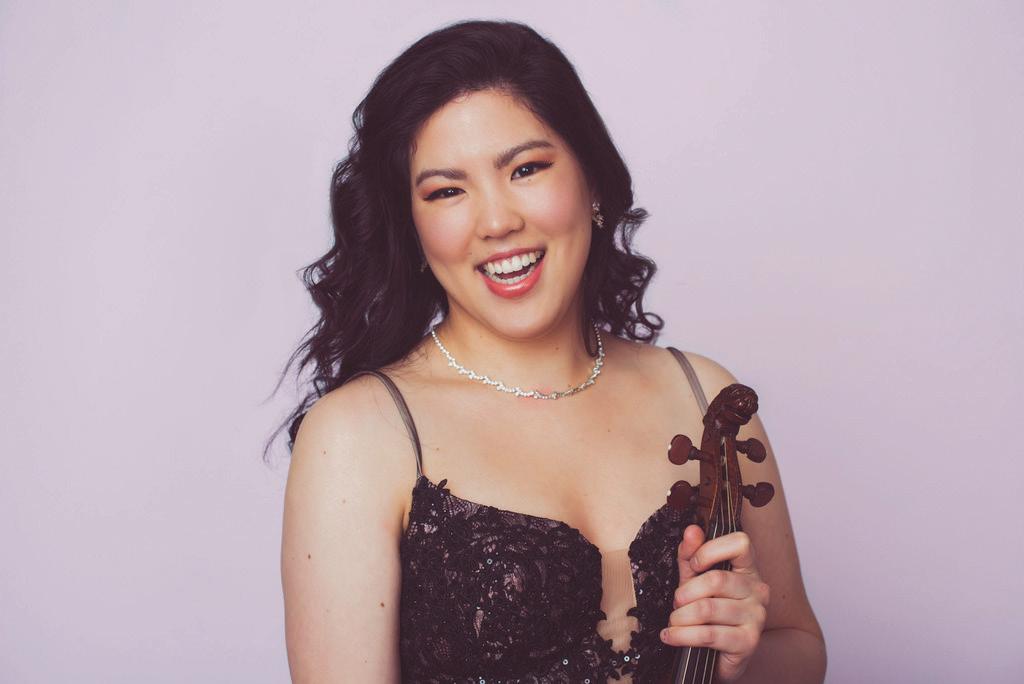
An animal nutrition and husbandry specialist, Mohammad Siddiqui didn’t have any prior training as an interpreter until a friend encouraged him to take a job in Afghanistan to translate Pashto, one of the official languages of the country.

Siddiqui says he spent 10 years at bases interpreting for the U.S. military. As operations in Afghanistan were scaled back, Siddiqui returned to the U.S., where he’d previously earned a doctorate degree from Texas Tech and a postdoctoral degree from MU. He found a part-time position as a Pashto



Pashto-speaking families in the English-dominated school system. Siddiqui says students of clients often see him in between classes and view him like he’s a part of their family.
“If they see someone who is speaking their language, you can really see a bigger smile on their face,” Siddiqui says. He meets with students on behalf of teachers or gives them advice and guidance on how to interact and effectively communicate with other students.
Siddiqui says interpreting is more than translating. It’s helping people make the transition from an old environment to a new one by understanding the differences between them.
“It’s not only the words you translate, but you translate the whole concept,” Siddiqui says. Adding that all messages between parties need to be mutually understood and effectively processed for these relationships to function. “If you’re going to a doctor, you give that information from the patient to the doctor, and



“ WE AS INTERPRETERS ARE A TOOL THAT CAN HELP AN INDIVIDUAL THAT’S IN NEED OF BRINGING JUSTICE TO THEMSELVES.”
— Ana Garcia
Zuhnia Kozbar helps clients understand a wide variety of materials such as medical
Theater buff Corey Dunne has found a home at the children’s playhouse TRYPS.
BY EMMA LINGOCorey Dunne does it all. As the sole employee of TRYPS Children’s Theater, she takes care of everything from the phone calls to the curtain calls.
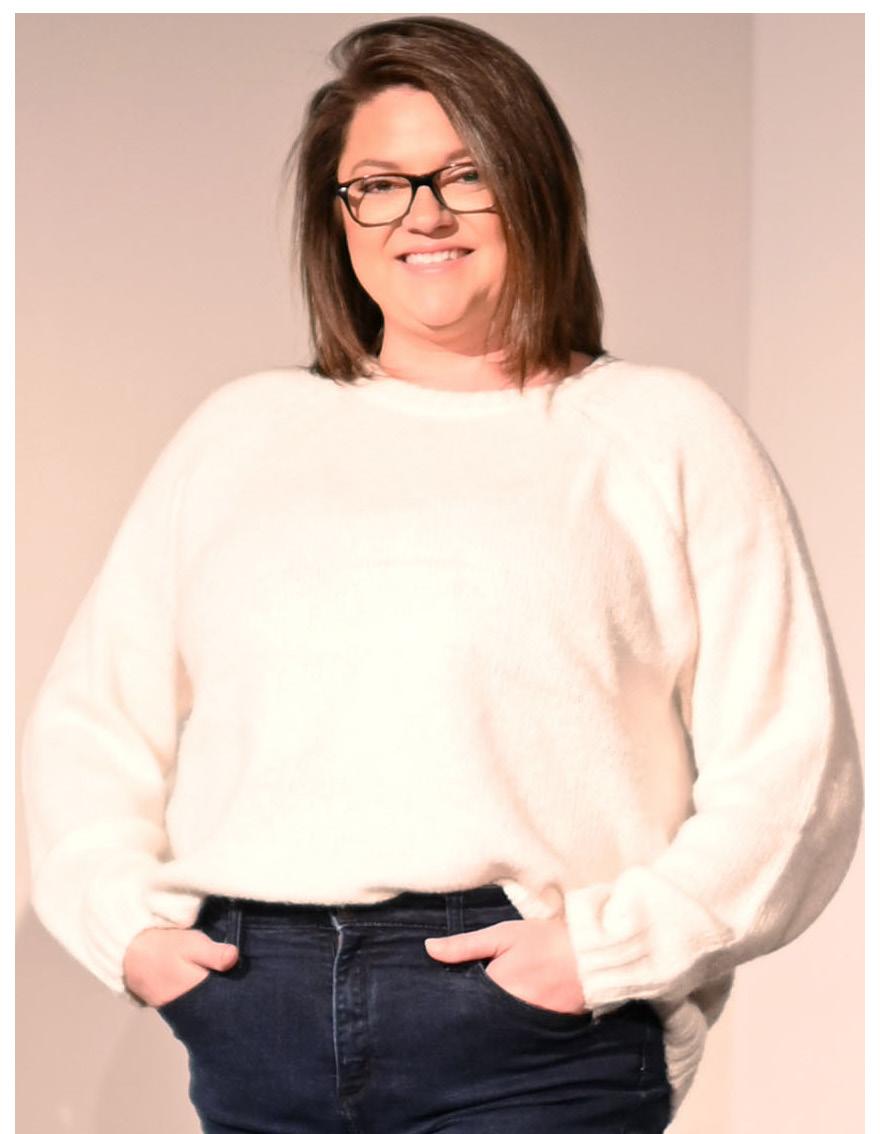
Her role as the theater’s executive artistic director might be new for her, but she has been working with the children’s theater since 2005. It’s where Dunne met her mentor, Jill Womack. Womack stepped down as executive artistic director in early 2022, and Dunne stepped up. “This work, in this job, in this world are what feeds my soul,” Dunne says.
Children’s theater has been Dunne’s lifelong passion, she says. It may be in her past, but it’s also in her present and future. This is an excerpt from an epi sode of the Vox Voice podcast, which you can find at voxmagazine.com.
How did you get into musical theater?
I’ve always been a singer primarily, so that’s really where the entry point was for me. I was in choir in fourth grade, fifth grade, all through middle school and high school. I went to Rock Bridge — I’m a local girl. I was in the musical theater class, and that really kind of started my love for musical theater. But then my senior year of high school, I did the school play, and I took the children’s theater class, so that was how I was introduced to chil dren’s theater. It’s kind been my world ever since.
Did you ever envision this as your career?
Absolutely I did. It was the middle of my sophomore year (at Missouri State University), and I had known Jill and had worked at TRYPS for a couple of years at that point. I emailed her and said: “I want to be you when I grow up. What do I do?”
This whole journey has been because of finding TRYPS — really, it was a magical place. It’s been home to me since I was 18, and I always knew that I wanted it to be my home forever.
What does the theater mean to you?
It is such a family. Both within the TRYPS family, but also the Columbia theater community at large, is really a special, tight-knit group of total weirdos. You know, it’s a family. We call theater a team sport. It is no different than baseball
TRYPS, which stands for Theater
Reaching Young People in Schools, offers classes for children in fourth through 12th grades.
Contact TRYPS at 449-4536 or trypskids@gmail.com.
or football. You rely on your teammates to get everything done, so these insane, really close bonds form when you’re onstage with another person. Because theater is such a vulnerable experience, you really, really create a strong tightknit family and that bond goes with you off the stage as well. Some of my closest friends are people that I did theater with 10, 15, 20 years ago.
Outside of theater, how do you spend your time?
When I am not doing theater, I do other arts experiences in general. If I’m sitting at home on a Sunday and I’m bored, I’m going to pull out probably fabric and be sewing or crafting in some capacity. Otherwise, I hang out with the dog and I spend time with my parents, my family, my friends. Love a good fire pit, love a good Logboat beer. That’s kind of my life.
What do you hope the kids take away from their experience at TRYPS?
I just hope they take joy home with them. I hope that they have had a good time, and I always want them to learn something. But secondary to that, or I guess primary to that, even, is just that they have felt welcomed. That they have enjoyed their time with us. That they have gotten to express themselves in a way that maybe they haven’t gotten to in other areas of their life, and that they, you know, get to just be themselves and be kids.

Step aside, CoMo. The Dancing Divas are ready to serve, inspire and uplift the community.
BY KHALIA SMITH

Majorette-style dance has been a staple of Black culture since it grew out of the South in the late 1960s. Introduced by historically Black colleges and universities, majorette dancing fuses elements of both jazz and hip-hop dance and incorporates pompoms and batons. Nearly six decades later, the tradition is kept alive right here in Columbia.
The Dancing Divas of Como was founded in June 2022. The dance team has a goal of showcasing local talent and highlighting the importance of community. It specializes in majorette, as well as hip-hop, jazz, ballet, lyrical and other styles of dance. The team debuted at the 2022 MU Homecoming Parade.
Takyra Miller, founder of the Dancing Divas and mother of dancer Sarai Buckins, started dancing at age 2. “Columbia doesn’t really have the style of dance we were looking for,” Miller says. “I feel like the majorette community doesn’t really get as much respect as any other form of dance.”
She decided to form the team not only because it was something that Columbia lacked, but also to give back through community service, which is a team member requirement. The team had its first service event at the Ronald McDonald House last December, where it assisted in preparing meals for families of children hospitalized at University Hospital.
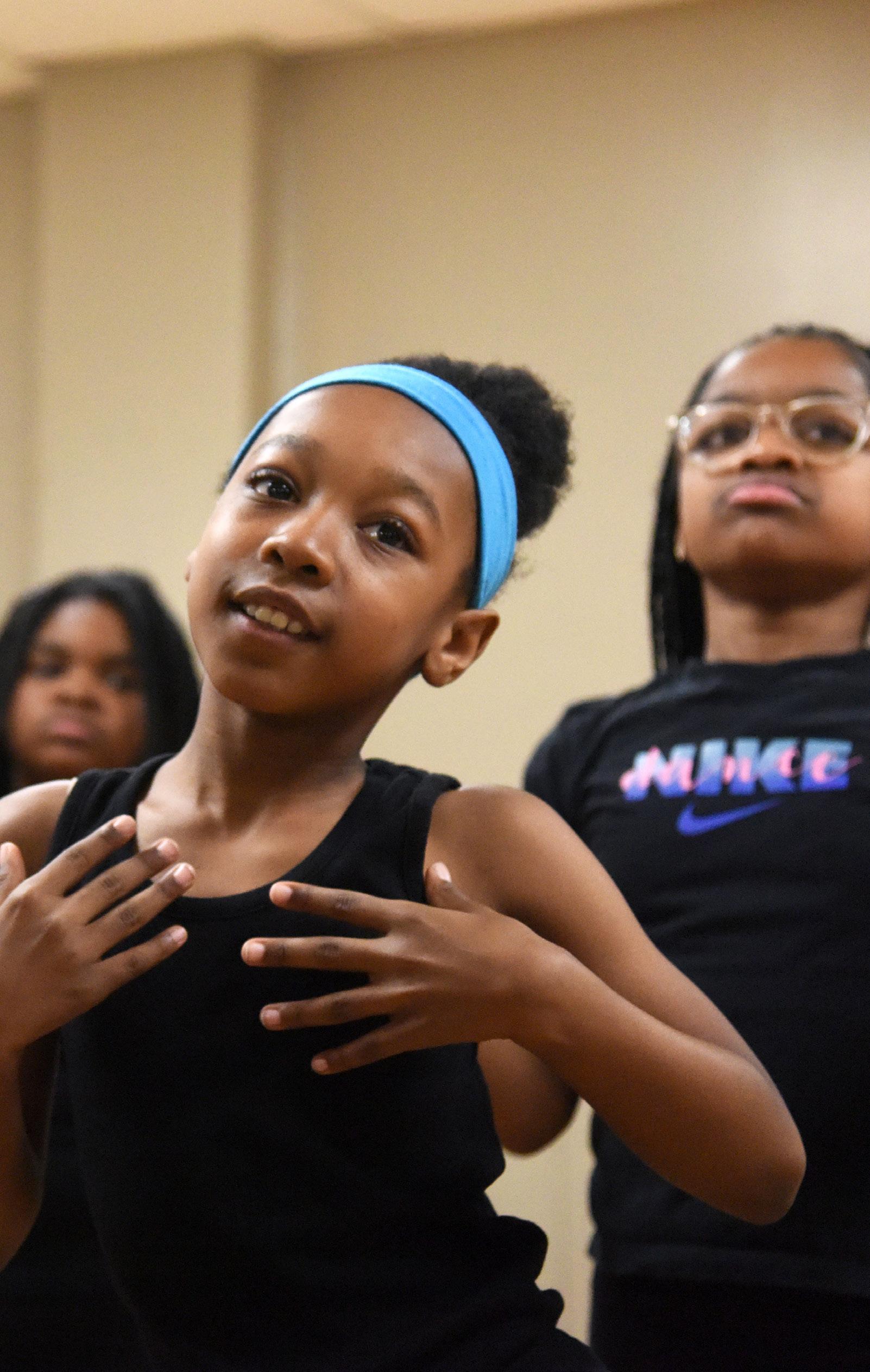
Miller is ambitious about the team’s community service. She aims to create a scholarship program to help low-income parents get their children involved with extracurricular activities; she also plans to develop an after-school tutoring program to help children from low-income families improve their grades and school performance.
More than a one-woman show Aireeyce Bonner, head coach of the Dancing Divas and an MU senior, says she believes the team has the potential to inspire Columbia’s Black community by offering an environment where the team can meet new people while honing their dance skills.

“I think it gives a lot of them a space to be themselves,” Bonner says. “It’s that moment to build your confidence.”
Bonner says the team has given the girls a chance to feel beautiful and learn more about their culture. As members of the team, young Black girls can channel a sort of alter-ego and use performance to express themselves in a way that’s beyond words.
Sarai Buckins, 11, has been dancing since age 2, just like her mom, and dreams of being a professional dancer. Her favorite memory with the team is practicing for the debut performance.

“I started off doing dancing for fun,” Buckins says. “The more I started liking to do it, I fell in love with it, and it was just a way of how I express my feelings.”
Za’dia Johnson, 15, is the oldest dancer on the team. She says the team has helped her become a better dancer and step outside her comfort zone. She appreciates the opportunity to meet and form bonds with other young girls who share her love for dance.
The Dancing Divas has a lot in store for 2023. In March, the group will attend a majorette training camp in St. Louis hosted by the renowned group, The Dancing Dolls. This summer they will perform in Mexico, Missouri, as part of the town’s Fourth of July celebration. Miller also worked with the Day Dreams Foundation to establish a $500 scholar-
ship to help families pay for team fees. The Dancing Divas welcome new members from ages 6 to 18. Members are expected to maintain a GPA of a 2.5 or higher and participate in all community service events. For more information, reach out to dancedivas573@gmail.com.
Whether you’re making your first EP or have been releasing music for decades, there’s a local recording studio for you.

 BY JANE STEINBRECHER
BY JANE STEINBRECHER
No need to leave Columbia to find the perfect recording studio — local musicians can easily find one right here. There are plenty of options, including home studios and commercial operations, each with its own philosophy, style and method of recording. Vox spoke to some of the city’s producers to help you pick the right studio for your creative needs.
The metal experience: For Columbia’s metal artists, Apollo Audio Alt is a haven. Ryan Vincent started out recording for his own band in the ’90s before moving on to recording others. He opened up shop in 2015. “I got into metal because of the difficulty,” Vincent says. “It’s hard to master.”
Sessions average $125
Home studio, apolloaudioalt.com, 607-0795
Making it personal: Wil Reeves, owner of Centro Cellar Studio, says there’s more than one definition for what a producer does. As the sole operator, Reeves wears many hats to assist artists on their creative paths. “Some days I’m an engineer, some days I’m a producer,” he says. Reeves describes his approach as being similar to that of a therapist. “I might have to prod (the artist) a little bit,” he says. “I see what it is they might want and lead them in that direction.”
Rates start at $45/hour
15 Austin Ave., centrocellarstudio.com, 424-6833
Capturing live music: Studio owner Rob Boullion provides a unique studio experience. As the only location-based studio in Co-
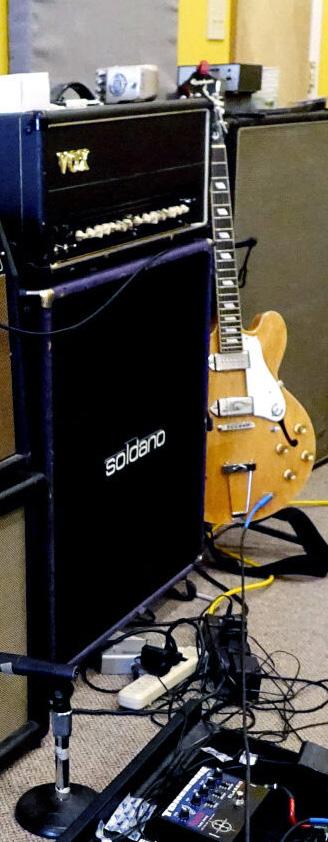
lumbia, LinderVox Sound will meet you wherever you want to record. It specializes in live bands and orchestras. “I’ll go check out (the location), we’ll see if it’ll work and look into frequencies, feedback, stuff like that,” Boullion says.
Rates start at $50/hour or $35/hour for educational and non-profit organizations
Location-based, lindervoxsound.com, 268-9802
Raw sound: If you’re wary of overproducing your music, MPF Studios owner and operator JT Schnakenberg says he strives to make artists sound like they’re performing live and capture them in the rawest state possible. “I think (overproduction) takes away from being the artist you truly are,” he says. “I try to get everything done in one track.” MPF Studios has been in operation for four years, but Schnakenberg has been in the industry for over 20.
Rates start at $30/hour 602 Jackson St., mpfstudioscomo.wixsite.com, 397-3891
Professional made easier: Looking for professional-grade equipment without the in-
timidation of a typical commercial studio?
North Village Recording owner and head producer, Tim Hanson, says he wants artists to be “able to come into the space, skip the overthinking, be themselves and work on their music.” North Village Recording is the only commercially owned and operated studio in Columbia since it opened in 2013. Sessions average $45/hour
1203 E Ash St., northvillagerecording.com, 823-3969
Vibrant and diverse: Szkolka Studios is operated out of a renovated former barn next to Pete Szkolka’s house. Szkolka has been in the music business for 45 years and recently recorded with Willie J. Campbell, formerly of Fabulous Thunderbirds. The studio is known for its diverse clientele and long-standing, prominent role in Columbia’s music scene. “Columbia has always been a vibrant music community,” Szkolka says. “There’s this stubborn insistence on original music. They come in and they’re playing what their hearts want to play.”
Contact for session rates
6150 N. Oakland Gravel Road, 489-4674
With a wide variety of studios and equipment to chose from, local producers can work with artists in different genres, skill levels and types of production.

In their basement-turned-studio, this Columbia couple fosters creativity and community through pottery.
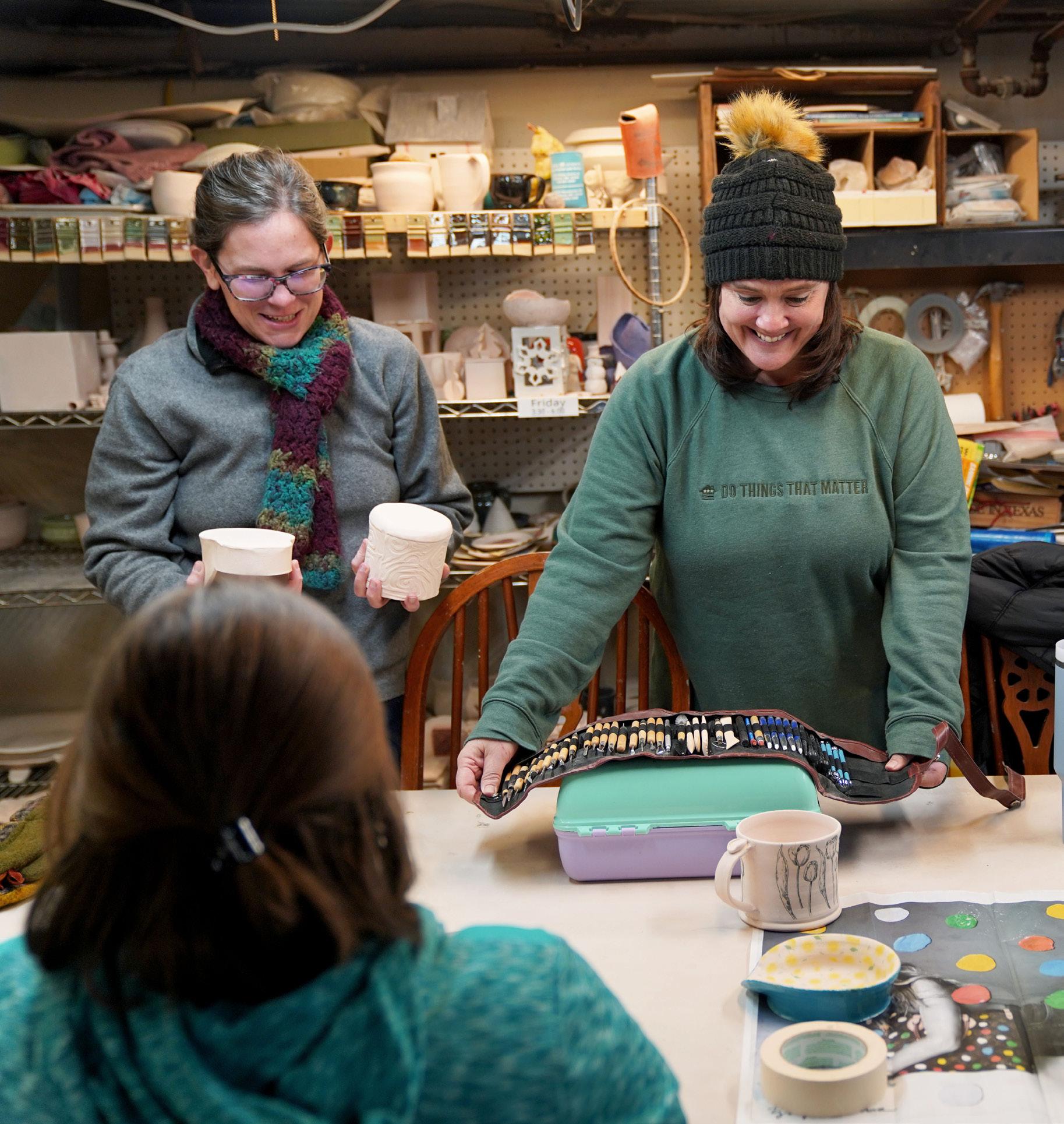 BY AMILEE NUZZO
BY AMILEE NUZZO
Students at Squarepeg Art Studio are encouraged to walk right in. The doorbell doesn’t even work. And no one answers it anyway. Zoey, a half-Great Pyrenees, half-German shepherd security dog, will greet you at the door and sniff you thoroughly while you look around the living room. The walls are lined with finished pieces made by spouses and owners Peg Craig and Nancy Gause. Once you pass Zoey’s inspection, you can walk through the living room and the kitchen to get to the basement studio. Students enter this way, and Craig tries to guess who has arrived by how they speak to her dog at the door.
The studio, which is casual and welcoming, holds six pottery wheels to keep the class sizes small. At the bottom of the stairs, there is a chalkboard that serves as a shopping list alongside social media handles and the Wi-Fi password. The kiln sits underneath the stairs, and the pottery wheels are in another corner.
Craig says that as adults, we need a place to connect with others. It can be difficult to meet and form bonds with new people in adulthood, but it’s still a
For information about classes (or to join a waitlist) contact Squarepeg at 881-4912, squarepegart.com.
necessary part of being human. That’s why the couple opened the pottery studio in their basement in 2010. It’s important to Craig and Gause to create a sense of community and allow Columbians to have a place to relate to each other.
Around the studio, there are wooden cabinets and metal shelves labeled with class dates and times so students can easily find their work. Next to those are buckets and smaller containers of glaze, as well as small ceramic test strips that show examples of the glazes after firing. Students help each other find tools and offer their own materials to help other students complete their projects.
Before opening the studio, Craig and Gause had talked about self-employment and hosting one or two pottery classes a week, but the idea of giving up a regular paycheck didn’t seem worth it — until they didn’t have a choice. The pair both lost their jobs in 2008 and 2009, and Gause was diagnosed with cancer in 2010.
“(After) losing my job, it didn’t really matter anymore,” Craig says. “(Then) it was deciding whether we wanted to try it or try and go find a real job.” They decided to follow through with making a living from their basement so Craig could be close to home in case something were to happen to Gause.
“She’d make a friend come over and sit with me while she was in the basement just in case I stopped breathing or something,” Gause says, both laughing. Craig says that during the treatment, the business didn’t grow a lot because she was being a “big baby” about the whole thing.
Now, almost 10 years out of her radiation therapy, Gause is the first point of contact for the studio. She specializes in non-clay art, so she receives phone calls from interested people and schedules classes.
With full classes and a waitlist, Gause keeps track of callers and their class preferences so she can call back with an open-
ing when they have one. Some students come and go, and others have been attending classes for 10 years. They’ve had some students that take time off from classes and then return years later married and with children.
One couple, Laird Thompson and Emily Crawford-Thompson, has been attending classes as a form of self-care since 2016. Emily is a licensed clinical psychologist, and Laird is a retired U.S. Army veteran and a hospital and hospice chaplain. Laird provides spiritual care in a more clinical setting. In his work, he often mentions Squarepeg and the pottery class.
“I present self-care and resiliency training to first responders, health care
professionals (and) law enforcement,” Laird says. “I’m modeling for them what good self-care is. Even when we’re super busy, we don’t want to miss pottery.”
Diagnosed with PTSD, Laird says these classes often make him feel better. He and Emily attend to have fun and as part of his self-care therapy.
Craig and Gause host seven classes a week. Most are handbuilding and wheel throwing, but the Friday night class covers sculpture. After a few classes, the students are able to work independently on their art with Craig’s moral support from the other side of the room.
“Being creative, it’s like the perfect little bridge between the little kid in all of us and our spirituality,” Craig says.
Ashley Turley paints glaze onto a mug decorated with flower stencils.

Nancy Gause (left) and Peg Craig run a pottery studio out of their basement on Broadhead Street. They opened the studio in 2010.


True/False began as a documentary film fest. Now in its 20th edition, it’s so much more than that. It’s a celebration of art, culture and community. An example of this is the 2023 poster. Over 150 people worked on the arrows included on the piece, called The Living Machine. The festival features work from folks all over the globe, including Victoria Linares Villegas, the True Vision Award winner from the Dominican Republic (p. 19), as well as many others, such as Ukrainian director Maksym Melnyk.
Much like this year’s theme, “This Is a Test,” the contents of the fest itself are very much a test for the people organizing it. (The planning starts in April — see p. 18.) “Each year we’re testing ourselves and testing the waters and evaluating how we can do things better,” says Sarah Nguyen, the art installations curator. No matter what is new — and what is time-honored tradition — True/False provides a variety of films (see the Doc Matrix on p. 23). Here’s what you need to know about this year’s documentary film fest, from March 2–5.
— Natalie-Elizabeth TanDESIGN
AVA HORTON
JESSE BERLIN, PETRA RIVERA, KEARA SHANNON
The four-day film festival takes a full year of preparation before it hits downtown Columbia each March.
BY GRACE ANN NATANWANApril is the calm before the storm, a month of rest for the committee members, curators, volunteers and coordinators. Even though the next festival is 11 months away, the wheels begin turning in April. “We have an internal saying that the fest is tomorrow,” says Arin Liberman, co-custodian of the Ragtag Film Society. “So no matter what day it is, any day of the year, the fest is tomorrow. Even on the last day of the festival, the festival is tomorrow.”
Committees begin big-picture planning for the year ahead. “A big part of it is looking back at the festival and assessing what we think went well, what we want to improve upon,” says Chloé Trayner, artistic director of Ragtag Film Society. “We spend a lot of time talking to the filmmakers that came to the festival but also trying to get a sense from audiences.”
AUGUST
As the open call for artist submissions comes to a close, the art installation team begins sorting through the proposals. About 40 pieces are submitted each year from artists located around the globe. The art installation team works through operational obstacles as they plan to bring the downtown area to life. “We have very unconventional venues for art pieces, so quite a few proposals, which are tremendous pieces and wonderful art, just didn’t really make the cut in the first round,” says Sarah Nguyen, art installation curator of Ragtag Film Society.
The finer details of the festival process unfold. Partnership and development teams start exploring possible collaborations for the festival. Community partnerships, such as the Show Me True/False film screenings, expand film opportunities to the greater public. Meanwhile, the operations team figures out transportation resources and prepares to transform downtown Columbia into an accessible festival space.
Open call for film submission begins. Over 1,000 full-length and short films are submitted, and this year 33 features and 25 shorts were accepted. Over 30 people assist in the curation process, which includes writing rejection letters to each film if they are not selected for the program. “(It’s) really important to us in making sure that we’re engaging critically with the work and the way to give back to filmmakers who are sharing their work with us but also paying a submission fee,” Trayner says.
November and onward is the busiest period for the committees. The open call for film submissions has come to a close, so the film program curators and advisors spend most of this time watching and discussing films. Trayner says she watches about 18 films per week during this period. Meanwhile, Nguyen gathers select artists and an art committee of six to eight people — made up of production team members, venue artistic directors and curators — to hammer out decisions for the public art installations.
The teams gear up for program announcements as the festival quickly approaches. Directors manage guest relations and coordinate with filmmakers to see who can appear at the screenings. Volunteer orientation takes place two weeks before the festival for the lifeblood of True/ False, says Trischa Splitter, the volunteer coordinator at Ragtag Film Society. Major training for volunteers happens as they are assigned to their teams.
As the curators construct the program, teams discuss how they will frame the lineup. Travis Bird, technical director for Ragtag Film Society, begins receiving digital and physical copies of the films. In the art department, the program begins to solidify as the artists sign their contracts.
Enough with the previews already! The lights are dimming and the films are about to begin.
Dominican filmmaker wins the fest’s True Vision Award with her focus on confronting conflicts.

 BY KARLY BALSLEW
BY KARLY BALSLEW
Victoria Linares Villegas, an award-winning Dominican filmmaker, is a rebel. Her fearless dedication to the film industry and ambitious persona have won her a variety of awards, including Best Documentary at the Fine Arts Film Festival in the Dominican Republic and Best New Director from the Youth Jury at the Vancouver Latin American Film Festival.
This year, she is the recipient of the only award given at the True/False Film Fest, the 2023 True Vision Award. The award celebrates the dedication of a director, or their team, to the advancement of nonfiction filmmaking.
Before Linares Villegas entered the film world, she pursued other artistic careers. After high school, she studied creative writing — her grandfather was a poet and influential writer in the Dominican Republic. In her free time, she started watching films and stumbled onto Breathless by Jean-Luc Godard, a French crime drama that would alter her career path. “From there on I think my life changed forever,” she says. “I wanted to do exactly that.”
She then left the Dominican Republic to study at The New School in New York. There she met Dominican couple Wendy Muñiz and Guillermo Zouain, who helped produce her short film Stay Quiet and first feature, It Runs in the Family, which explores the life of her forgotten cousin, queer filmmaker and political activist Oscar Torres.
She says writing about marginalized and queer characters, intergenerational trauma and women in the Caribbean is a way to question and expose the is-
sues and internal conflicts facing those communities. She focuses on characters who are rebels because she comes from a similar background and works to confront trauma related to her conservative household and country.
Her new film, Ramona, had its world premiere in February at the Berlin International Film Festival. It focuses on actor Camila Santana, who is about to play the role of a pregnant teenager. To better prepare for the role, Santana converses with multiple pregnant teenage girls to understand what it is like to be in their position. Giving these girls a space to talk about their lives and how they should be portrayed in the film is important to Linares Villegas because all abortion is criminalized in the Dominican Republic. “This is something that’s very urgent, and no one is really talking about it,” Linares Villegas says.
Ramona co-writer Diego Cepeda is a close friend who has known Linares Villegas for over 10 years. “As a filmmaker, Victoria is someone with great curiosity,” Cepeda says. “She knows how to find clear narrative structures within reality and creatively capture them on screen.”
As part of the True Vision retrospective program, Victoria Linares Villegas will present A Moment of Innocence, a film that influenced her approach to filmmaking.
Linares Villegas credits colleagues such as Cepeda as part of her success and why she was chosen for the True Vision Award. “A lot of people have helped me pave the way,” Linares Villegas says. “I don’t see it as my award. I see it as a collective award for everyone who has been with me since the beginning.”
See truefalse.org for showtimes and locations.
• Ramona, three showings March 3–5
• A Moment of Innocence, by director Mohsen Makhmalbaf, March 4
• It Runs in the Family, March 5
Jordi Gassó is one of the producers for Ramona and has known Linares Villegas since they were both in school in the Dominican Republic. They worked together for the first time on Ramona, and Gassó says he admires her commitment. “Her films may deal with thorny issues, but I see them as sincere expressions of optimism, acts of imagination about a better future and less conventional ways of thinking of cinema, with all its promise, joy and boundless elasticity,” Gassó says.
Jumping into the film industry can be daunting, but Linares Villegas advises young filmmakers to produce something that is important to them, as it can affect a lot of people by challenging others and their views. “The most rewarding part is just making the films that you want to make,” she says.
Films The idea for a documentary film festival originated from the wave of stylized, inventive documentaries that came out in the early 2000s, including Bowling for Columbine and Winged Migration
“Those films had characters, stories and an emphasis on craft,” True/ False co-founder David Wilson says.

Filmgoers (above) watch Sisters in Law at the 2006 fest.

PHOTOGRAPHY BY JASON BORSETH/ARCHIVE
Take
BY AUSTIN WOODSAfter 20 years, True/False Film Fest has become one of Columbia’s foremost cultural institutions — but it wasn’t always this way. Shortly before the first True/False in 2004 another film festival called Kindred was held in Columbia, but quickly failed. This fostered a lot of doubt in future festivals, including True/False, which was founded by David Wilson and Paul Sturtz. However, months of careful preparation and the involvement of Ragtag Cinema (which Wilson also founded with Sturtz in 2000) set up the festival for success.
Wilson soon found himself standing on the Missouri Theatre stage, introducing a film to a packed house. It was there he realized all the initial doubt had been surmounted. “(It) felt incredibly special,” Wilson says. “After months of literally nonstop work on a lot of people’s part,
it was really gratifying.”
Afterward, the Columbia Daily Tribune concluded, “True/False was no fluke … and definitely no Columbia con job.”
Nearly every year since its inception, the festival has kept growing and bringing in more attendees and filmmakers.
Wilson says he sees the fest’s events as one big play or performance. Its overall history can be understood the same way. Each “scene” is a moment of unity, a participatory experience acted out by cinephiles, filmmakers, buskers and Q queens, all coming together to celebrate their shared love for documentary and, above all, to foster a sense of community.
To commemorate 20 years of the vibrant community surrounding True/ False, Vox compiled a visual retrospective of the festival, from its early days to its current state.
a look at the many elements that have made True/False an inventive and boisterous experience for two decades.
Q queens Carolyn Magnuson reacts to the new puppet of her during the 2018 March March parade. Magnuson is one of the flamboyantly dressed Q queens who manages the festival’s queues (called “Qs”) before each screening. Although costumes were part of the Q queen experience from the beginning, the outfits became more elaborate over time. “When people are waiting, not knowing whether they’re going to get into a movie, there’s a ton of anxiety, and if we can allay that anxiety, they’re going to have a much, much better time,” Wilson says. PHOTOGRAPHY BY LIV PAGGIARINO/ARCHIVE

The Missouri Theatre Tyler Richardson removes letters from the theater’s marquee in 2007. The theme of that year’s festival was “The Shock of the New.” True/False co-founder Paul Sturtz says he and Wilson wanted to incorporate every local venue into the festival. “The possibility of weaving together all these venues that were within walking distance of each other in downtown, like The Blue Note, the Missouri Theatre, Ragtag and soon after that the Tiger Hotel, it was just something that just seemed like it was right.” PHOTOGRAPHY BY AARON ROSENBLATT/ARCHIVE

Parties An ongoing tradition of True/False has been its lively after-parties. In 2006 at Tonic Night Club (left), festivalgoers dance at the @ction Party.
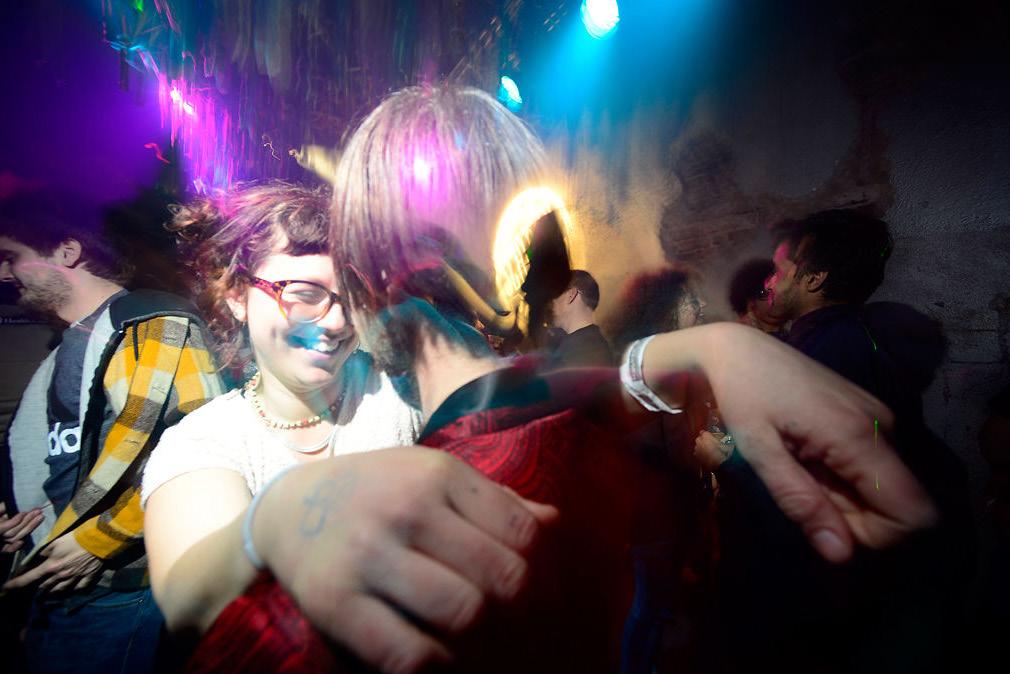
Wilson says that, in the festival’s early days, some parties were held in empty warehouses, and there was often fear of being shut down by law enforcement.
“There was a certain point where someone (from the police department) reached out to us and said, ‘Tell us where you’re doing your party, and we won’t have to interrupt,’” Wilson says. “That was a moment of, ‘Oh, we’re sort of official now.’” PHOTOGRAPHY BY ANNALIESE NURNBERG/ARCHIVE
Art Artist Levi Bedall walks through one of his installations at True/False in 2018. Much like live music, art installations are just as integral to the festival as documentary films. Each year True/False adopts a different visual theme. This year’s theme is “This Is a Test,” referring to the experimental spirit at the heart of True/False.
 PHOTOGRAPHY BY JESSI DODGE/ARCHIVE
PHOTOGRAPHY BY JESSI DODGE/ARCHIVE
Buskers Music remains a major part of the True/False experience, as musicians (affectionately called buskers) can be found performing everywhere, including afterparties, showcases and film screenings. This dates back to the very first festival, when Wilson and Sturtz scheduled live music before each screening to get the crowd’s energy up. PHOTOGRAPHY BY
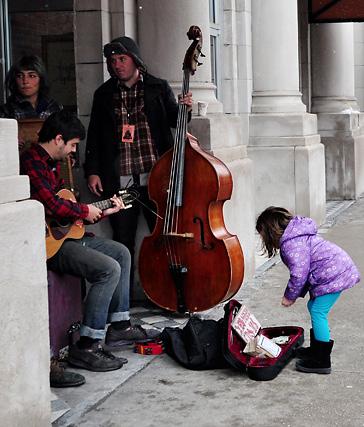 ROXANA POP/ARCHIVE
ROXANA POP/ARCHIVE

The March March parade began in 2005, and it is part of the community aspect of the festival. “(We’re) designing a flow for the weekend, and we put a lot of attention into that flow,” Wilson says. “The March March was an opportunity to bring everyone together.”
The Founders David Wilson (left) and Paul Sturtz conspired to launch the festival in 2004. “To a certain degree, we started True/False as an antidote to all the things we found silly about film festivals,” Sturtz says. “We set out to make a festival that was more about camaraderie and kinship than awards and celebrities.” At the 2005 fest, attendance jumped more than 50%, and a survey by the MU Department of Parks, Recreation and Tourism indicated that 18% of attendees traveled from out of town.






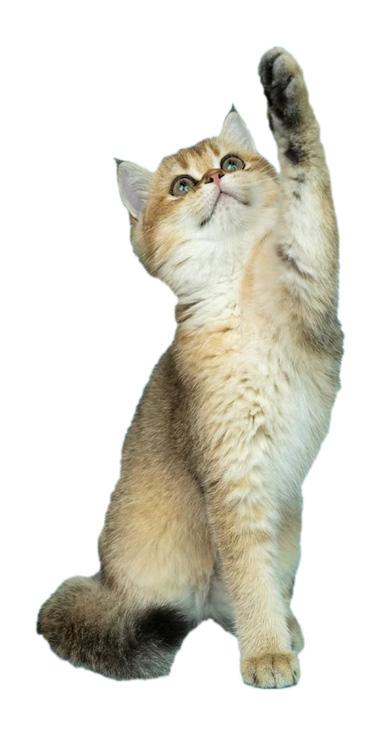





A network of volunteers helps prevent cat-astrophe.


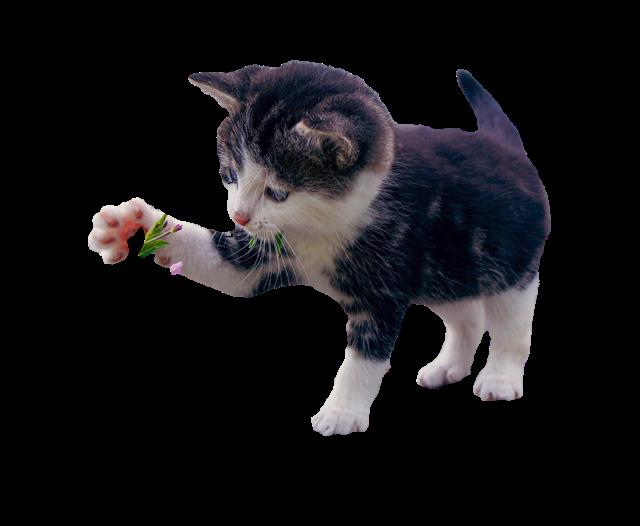



 Photography courtesy of Unsplash
Photography courtesy of Unsplash
F or Diann Stelzer of the Backstreet Gals, trapping is like cat TV. Stelzer and her gang of cat lovers work to trap, neuter and return (a practice called TNR) feral cats throughout mid-Missouri.
During a recent trapping in Fulton, they’d worked for weeks to capture an injured feral cat. The little guy’s tail was seen bleeding during a previous TNR in the area and would need special medical attention. After setting the cat traps with wet food, Stelzer watched from her van as the kitty show commenced. Lured into the live trap by the food, the cats stepped on the pressure plate, snapping the door shut behind them. But on this trip, Stelzer didn’t see the scaredy-cat with the wounded tail. So, the Backstreet Gals would have to come back.
All-volunteer groups like the Backstreet Gals, a group of women who have
been trapping since 2014, work handin-hand with Columbia clinics to provide medical care for feral cats. Without their work, Columbia and surrounding areas would be overrun with ferals. Left unfixed, these cats can spread diseases and terrorize local wildlife. Fixing also improves the lives of the cats themselves.
Stelzer says some TNRs can be super quick and others can last all day and into the night. “My favorite kind of trapping is when you put the trap down and the cat goes in, (then) you put the trap down, (another) cat goes in,” she says.
Trapping the feral cats, also known as community cats, that roam mid-Missouri requires patience and drive. The number of ferals and strays in Boone County is nearly uncountable, what with the lightning-fast breeding cycle of felines. One female cat can have up
2.4 billion birds are killed nationwide by free-roaming cats every year (both feral and indoor-outdoor).

It costs $25 for each surgery at The Spay Neuter Project, and the price includes a rabies shot. This price is about half the cost of surgery for house cats.
One cat can have up to three litters every year, and those kittens can have their own litter starting at 4 months old.

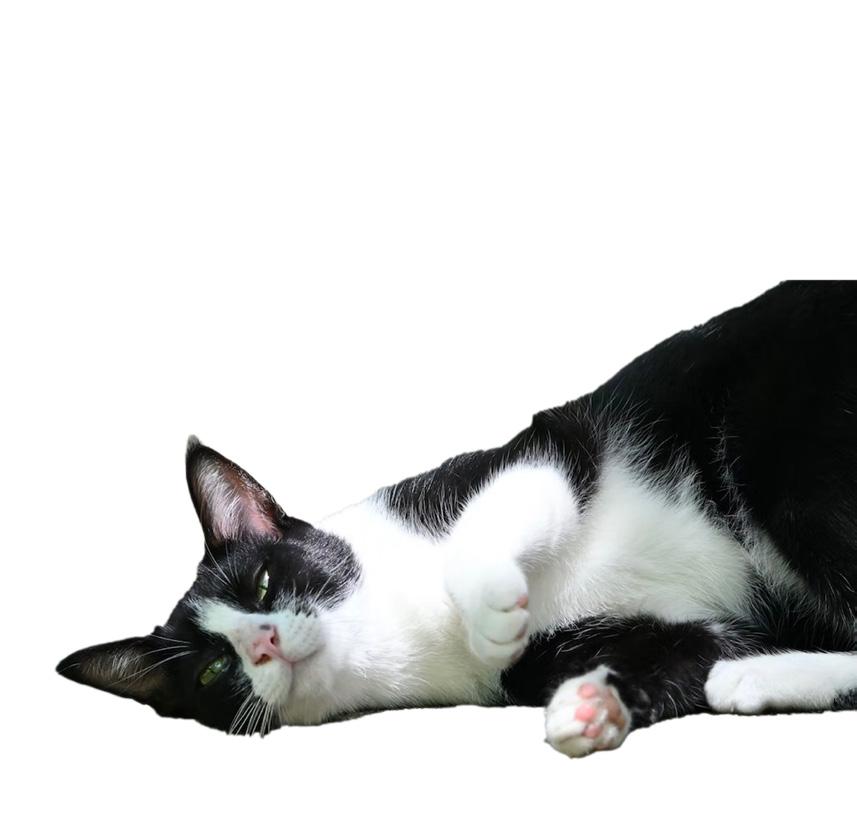
Only 250 of the 958 feral cats treated at The Spay Neuter Project in 2022 were from Boone County.
to three litters every year, and those kittens can have their own litters starting at 4 months old.
A large group of female feral cats and their offspring that live in one area, called a colony, can pop up in a myriad of places: a farmer’s hay barn, behind the local mechanic shop or a Taco Bell dumpster.
Cats close in on CoMo
Janeene Johnston, executive director of The Spay Neuter Project in Columbia, says TNR is vital to the overall health of the cat and human communities. Johnston’s clinic is a branch of the No Kill Columbia nonprofit organization that advocates for all animals in the area.
TNR is often the best and safest way to limit the number of ferals — yet funding for trapping, surgeries and the care of the cats is sparse, Johnston says. The majority of feral cats brought to her clinic are not from Boone County, but are taken in from neighboring counties due to a lack of local veterinarian care, government ordinances and animal control services.
“I was just shaking my head because we have somebody in Troy who called a St. Louis cat outreach,” Johnston told Vox in early November. “They’re full. They told him to call here, but we’re booked until late November, early December (of 2022). You’ve got these pockets of people who have cats, but they don’t have anywhere to go for surgery.”
An example of this lack of resources but no lack of cats is happening in Moberly. Residents there posted complaints on Facebook about rampant feral cat colonies, specifically one in Rothwell Park. Despite numerous TNR efforts, the cat population continues to grow. The City of Moberly Animal Shelter only takes in dogs, which exacerbates the problem. Many folks in the area leave unwanted


• If you see something, say something. Report a colony of feral cats or strays to property owners, and find out if they have been spayed or neutered. If they are, leave them outdoors.
• If the cats aren’t fixed, you can trap them yourself, or call a trapping group like Pet Adoption and Welfare Service.
• The Alley Cat Allies website provides a step-by-step guide on how to trap on your own.
• Trapping cats isn’t always simple, and Janeene Johnston says if you are interested in learning how to trap, the experts at The Spay Neuter Project can loan you a live trap and demonstrate how to use it.


• After surgery, release the cats back into the spot they were found within 48 hours of the surgery.
cats to fend for themselves instead of taking them to another county’s shelter.
Farther west, the city of Glasgow also has a cat overpopulation problem, with too few volunteers or veterinarians to complete necessary TNRs.
At a recent board meeting for the Pet Adoption and Welfare Service (PAWS) nonprofit located in Fayette, co-chair Kim Thompson says she had to turn down Glasgow’s request for help. PAWS was busy enough as it is, and with only one dedicated trapper, Thompson says the group didn’t have the resources to expand its services to Glasgow.
Thompson enticed that one trapper, her neighbor Steven Wright, into the role after her dogs kept running up to greet him on their gravel road. Wright had been bicycling 5 miles into town for groceries, and Thompson offered up the PAWS van to feed two cats with one bowl — Wright traps cats and gets access to a smooth, heated ride in return. Wright now drives daily from his home in Howard County to ferry ferals to and from The Spay Neuter Project. He says Howard County, where he primarily traps, is home to tens of thousands of strays and ferals.
Since 2019, when he got his start with PAWS, Wright has visited various properties to catch cats. Some folks in his county can’t afford to have their barn cats spayed and neutered, leading to an uncontrollable growth of feral cats. Nearly all trapped cats must be brought to Columbia for surgery due to a lack of available services in Howard County. PAWS pays for all fees related to TNRs, which Wright says is the best way to care for community cats in his county.
Columbia’s cat conundrum is a snapshot of a larger pattern found across the United States. Alley Cat Allies was founded in 1990 to introduce Ameri-
cans to TNR. Coryn Julien, a director of communications with the organization, says the COVID-19 pandemic had a large impact on the rising feral cat population. “At the beginning of the pandemic, while everyone was shutting down, veterinarians were not exempt from those shutdowns,” Julien says. “For many months, they had to hold all services, and then when they finally started getting back into the groove, they had a huge backlog of their own patients that made it so community cat spay and neuter had to be pushed back and back.”
These surgical delays led to a nationwide increase in community cats in both urban and rural areas. The delicate system of trappers, veterinarians and cat lovers who collaborate to address the feral cat problem across mid-Missouri is looking for more hands on this issue.
To aid these groups and to prevent a surge in cat colonies, being prepared for ferals that come along is key. The more volunteers who help trap cats, the more the cat community will thrive.
“It’s such a good thing that people are taking an initiative to trap the cats in their neighborhood because — people like me, or our little group — there’s only so many of us,” Stelzer says. “We can only do so much ourselves. And we’re more than happy to teach other people.”
Janeene Johnston, executive director of The Spay Neuter Project, coordinated over 900 spay or neuter surgeries in 2022. Johnston has worked at the clinic for 4 years.
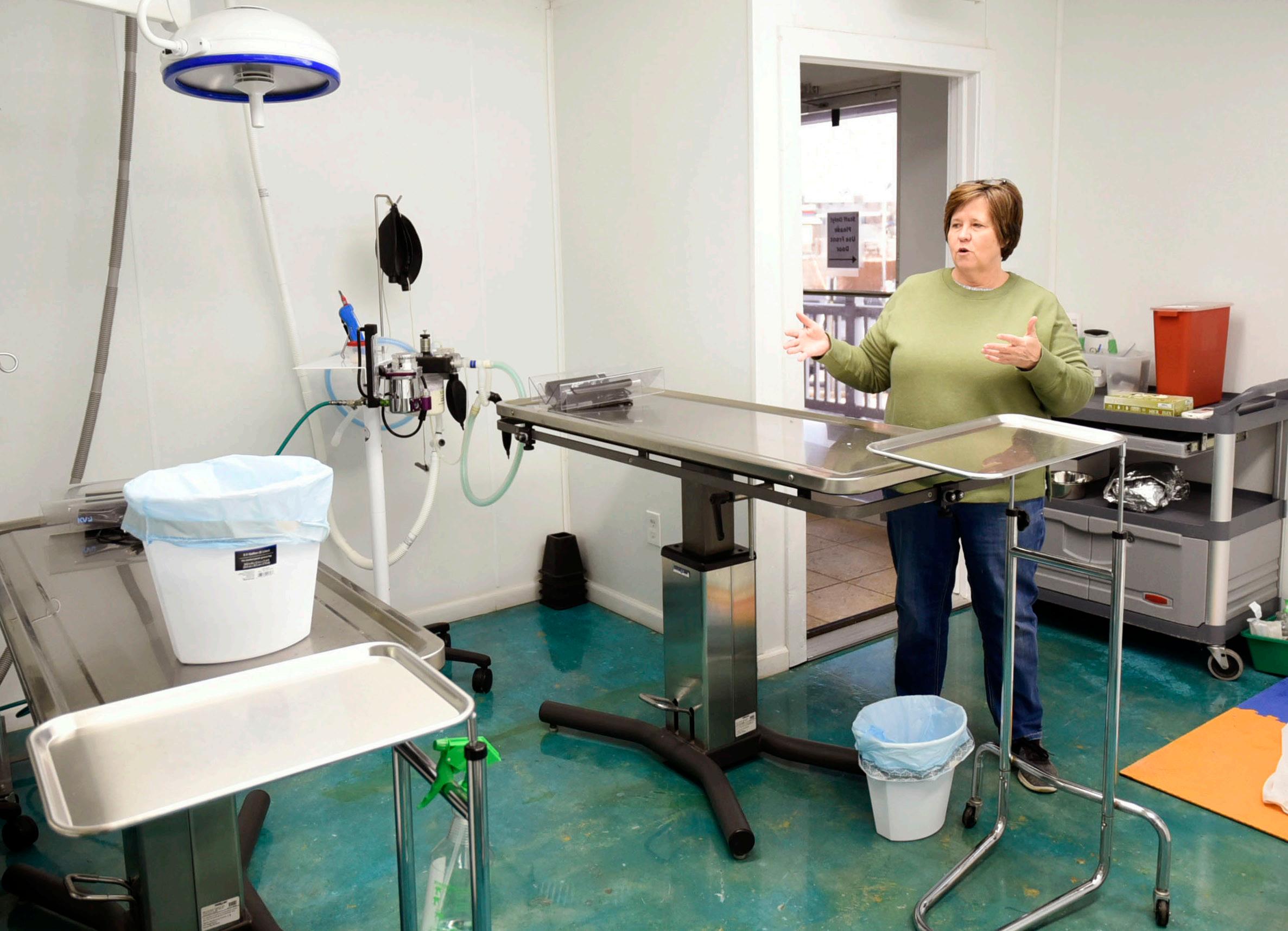
You can contact these groups for help.
Pet Adoption and Welfare Service
660-248-2739
The Spay Neuter Project 397-6443, spayneuter projectmo.org
Now we can all eat arepas as Aroma

Coffee teams up with Como Arepas to bring Latin flare to its menu.
 BY JACEY JOHNSON
BY JACEY JOHNSON
Venezuelan food is prepared a few steps away from the espresso machine at this Providence Road coffee shop, a perfect ode to the tradition of pairing arepas with coffee. It’s no surprise that sometimes customers douse a cachapa with syrup because of its pancake-like appearance. Then they realize it’s a dish served with shredded beef, cheese and slices of avocado.
You can order the sweet and salty cachapa, a corn mixture that becomes flat and round once it’s cooked, and then is stuffed with just about anything.
Yumivia and Jose Rojas are the owners of Como Arepas. Their business serves customers from a counter at Aroma Coffee House. They say bringing Venezuelan dishes such as arepas and cachapas to Columbia helps people become familiar with the culture and food of their home country.
From engineering firm to coffee shop

The married couple started serving their small menu of Venezuelan food at Aroma Coffee House in October after International Café owners Elizabeth Hernandez and Mohamed Gumati introduced them to Aroma’s owner, Yousef Darkhalil. The Rojas had been running their business out of their home for carry-out orders since August. They also utilized Como Cooks, a shared commercial kitchen on East Walnut Street.
Yumivia and Jose both studied engineering in Venezuela, and Jose moved to Columbia
in 2020 to work for a local engineering firm. Yumivia later followed. The Rojas say they always knew opening a Venezuelan food business in Columbia was a possibility. Moving from another country drew attention to the void of their home cuisine that he missed, Jose says.
Arepas can be ordered with various protein choices: shredded beef, cubed pork, chicken salad or black beans. Customers love to suggest new fillings. Yumivia says the beef and chicken salad arepas are customer favorites. “(The beef is) like an explosion of meat juice with garlic, onion, parsley flavors,” she says. In the chicken salad, the cilantro flavor is strong.
Yumivia swears by the “divine” flavor of the patacon. She credits that heavenly taste to a combination of many ingredients in the dish, including meat, pepper, sauces and bacon. Its distinction, though, is its use of plantains. Jose says they’re used like hamburger buns would be.
Other options are empanadas, te-
queños and small tres leches cakes stored in the refrigerator and dusted with cinnamon. The tequeños, a cheesy roll, are meant to be paired with one of Como Arepas’ three sauces: a sweet mustard sauce, a parsley-based green sauce with cucumber or a hot sauce.
Though arepas are usually enjoyed at breakfast, Como Arepas’ menu suggests the dish can be part of any meal. Customers order from the same single register at Aroma Coffee House.
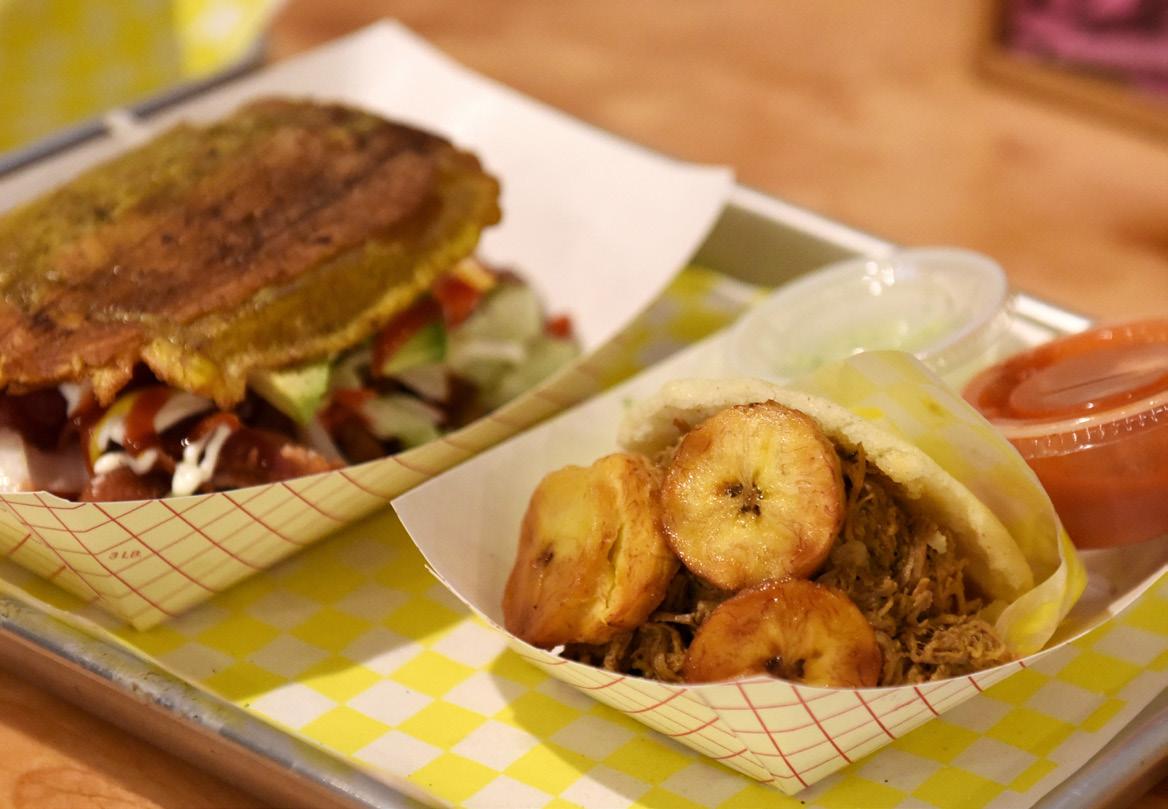
Along with cooking up tasty bites, Yumivia helps Aroma make drinks. “We don’t know how to make her food,” Aroma Coffee House manager Kara Mackey says. “But she does have a couple employees that do, and they’re really good.”
The Rojas say they feel a great responsibility to change Venezuelan food and culture from a foreign concept to a familiar part of Columbia. “We don’t come to compete,” Jose says. “We come to share.”
Como Arepas, 1009 N. Providence Road, 8 a.m. to 7 p.m.
Monday to Friday, 9 a.m. to 6 p.m.
Saturday and Sunday, find Como Arepas on Facebook

One local family brought a taste of home to the west side with the Old Neighborhood Cafe.
BY PETRA RIVERAAmother-and-son duo, Vanessa and Jake Leitza use their passion for food and serve it right back to their customers at the Old Neighborhood Cafe, which opened on Columbia’s west side in the summer of 2022.
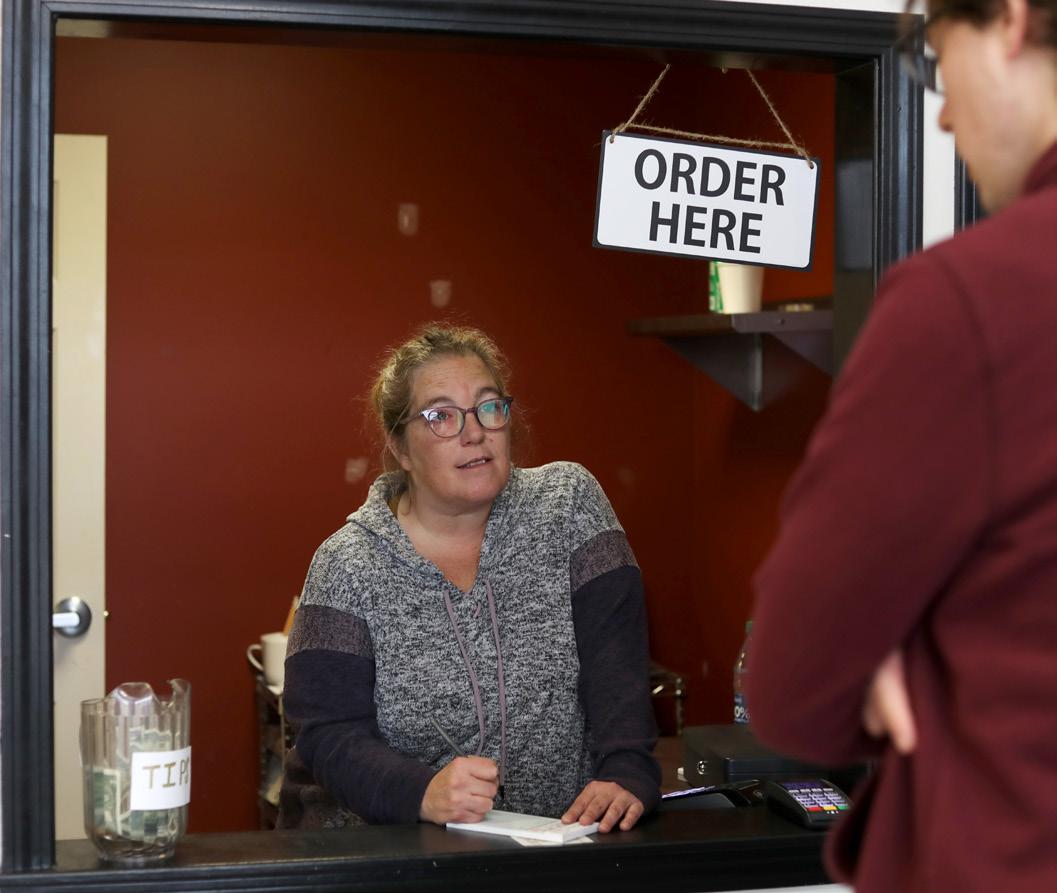
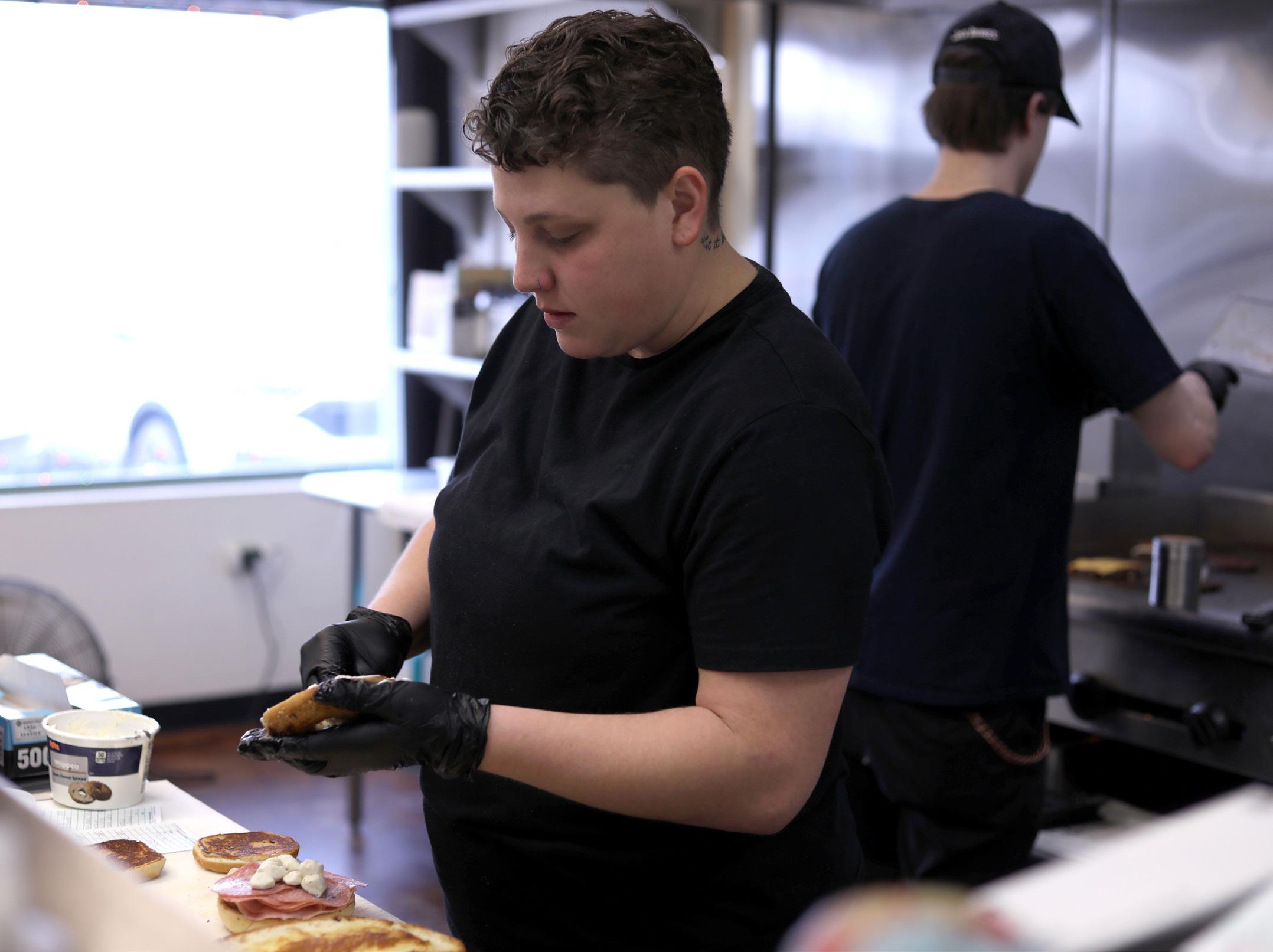
When it comes to food, Vanessa’s grandmother Theresa is her biggest inspiration. From sending her home with bags of groceries to guiding her through a recipe over the phone, Theresa helped Vanessa discover her passion for food. “As I grew up and got older, I realized that food actually really does bring peo-
ple together,” Vanessa says. “It’s sort of our essential universal language.”
The Leitzas used to own the Station House at Katfish Katy’s on the Katy Trail, but the atmosphere of the restaurant didn’t have the family-style community they wanted. After they closed Katfish Katy’s at the beginning of 2022, the Leitzas opened their own restaurant in July. The Old Neighborhood Cafe is a deli with the goal of giving customers a taste of home away from home.
“The Leitza family is the typical Italian American family,” says Samantha Olive, who has been eating their food since Katfish Katy’s. “Loud, passionate, fabulous cooks, and the most selfless people you can meet. It’s amazing to watch Vanessa and Jake grow and have something that is their own, all while remembering
why they wanted to open a restaurant — because of Grandma Theresa.”
The cafe serves mostly sandwiches, soups, burgers and salads, and it has a charcuterie board and catering business on the side. The Leitzas base all of their dishes on different cities in the United States. The Aunt Loretta sandwich is a Chicago staple, which is where the Leitzas are from. The cafe has a Bodega sandwich for the New Yorkers and a Miami Vice sandwich based on the famous Cuban.
“Columbia is such a melting pot of people that came to Mizzou and just decided to stay or relocate,” Vanessa says. “We just really wanted to help bring everyone’s favorite comfort food under one roof.”
Based on the Leitzas’ favorite restaurant in Chicago, Frankie’s Deli, the Old
Neighborhood Cafe is designed to be an open-concept restaurant to give customers the chance to interact with the cooks. They were also inspired by the way the employees treated all the customers as old friends, even if it was their first time there. The same energy is brought to the cafe with the help of
the strong community the Leitzas have been building for years in Columbia.


“If it was just the food, I don’t think it would be the same place,” says Cassi Cody, another regular who has known the Leitzas for years.
“It’s this family that really cares about their business, their customers,
The Golden State Gobbler and The Cure are lined up before being carried to customers’ tables at Old Neighborhood Cafe. Isaac Parrish, who frequents the restaurant on a weekly basis, says he loves the food.

the food, the product, their creativity and their drive for growth. They have these amazing ideas that nobody else in Columbia is doing,” she says.
Autumn Leitza, Vanessa’s daughter and Jake’s sister, is the head of the restaurant’s marketing and charcuterie board business. “Growing up, my parents did not have a lot, but cooking was something my mom had a great passion for and hoped one day she could use her skills professionally and make a name for herself,” Autumn says.

Old Neighborhood Cafe, 2011 Corona Road, Suite 101, Monday to Friday 11 a.m. to 8 p.m., Saturday 11 a.m. to 5 p.m., 282–8206
“Because of that, among other things, Jake learned his work ethic and how to persevere despite the odds. That is our dream come true. Years of hard work turned into a new life for our family and now we have a space to show who we are through the love of cooking and food,” she says.

Autumn says that seeing the cafe sign every day is a reminder of years of hard work, failures and fun. The community they have built, the atmosphere they provide and the food they serve reflects it with a certain style that can only be defined as Leitzas’.
To register, visit SOMO.org/Plunge or scan here:

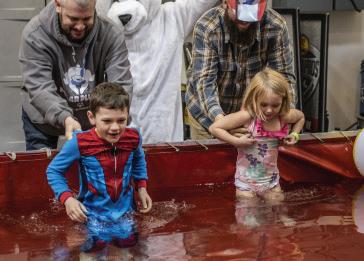
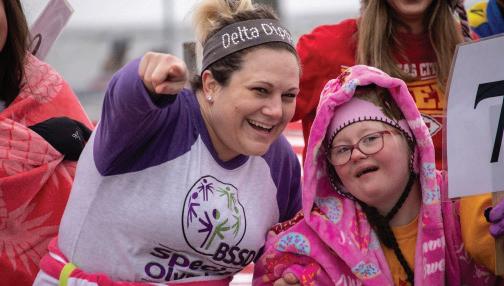





 BY SYDNEY SCALIA
BY SYDNEY SCALIA
At 12 years old, Blake Brown was already a businessman. Through middle and high school, Brown used his savvy business skills to sell bottled water and Honey Buns to his community. All the while, Brown was becoming increasingly obsessed with sneakers. The more his business ventures supported his shoe addiction, the more sneakers Brown bought and wore during high school.
After learning how to keep sneakers clean from YouTube videos, Brown decided to help out one of his peers by cleaning a pair of their Vans. After that, Brown knew exactly what he had to do. BTB Kicks, Brown’s shoe cleaning and restoration business, was born.
After Brown graduated from high school in Chicago, he was already cleaning about 20 pairs of sneakers a week as his summer job. When asked about the name of his business, Brown says he took inspiration from his own name. “I kept it pretty simple,” Brown says. “BTB Kicks is just my name, Blake Timothy Brown.”
Before Brown left for college, everyone from high school kids to adults came to him to get their shoes cleaned. But just as Brown’s clientele started to take off, he realized he had to start all over again at college. Now, as a senior at MU, Brown reflects on what it was like trying to grow his business. “It was really slow freshman year, so I had to build it up,” Brown says. But it didn’t take long for word of Brown’s skills to spread. “I basically started to pull off miracles, and everybody started telling everybody.”
Brown’s social media began to blow up with sneaker-cleaning requests from all over Columbia. Today, you can find BTB Kicks across multiple social platforms, covering sneaker news, student interviews and, of course, photos of incredible cleanings.
His roommate and friend from freshman year, Justin Efebera, says if you know Brown, you’re going to know about the business. “It’s something that’s associated with him — Blake is BTB Kicks,” Efebera says. “He’s put himself
in the forefront of the conversation when it comes to shoes.”
So how does Brown get new clients? While social media plays a big role in connecting people to his business, Brown says he typically gets new clients through word of mouth. “Typically people will post, and then someone will send them my way,” Brown says. “They send me the pictures, and I determine what type of services they would need, depending on the shoe model.”
One of Brown’s most notable services is icing, a process where he covers the sole of the sneaker in a deoxidizing solution, wraps up the shoe and then places it in a box where the shoe sits under UV light. The icing process helps pull out the yellowing that happens to clear-sole shoes over time.

Brown’s friend and MU alumnus Brendan Ball says the service is what makes BTB Kicks so unique. “You can keep your shoes super clean, but over time, it’s still going to get yellow. If he can turn that back to what it was before, it looks like it’s fresh out of the box,” Ball says.
If you have a pair of shoes with lots of wear and tear, his restoration service, which
“I want to continue this as a side business after I graduate from Mizzou, since most of my clientele are back in Chicago,” Blake Brown says. Brown started BTB Kicks 5 years ago at age 16, and he hopes to have a storefront in Chicago someday.
includes repainting parts of the shoe, is another way Brown brings shoes back to life. For every basic clean, Brown spends a good amount of time cleaning the shoes with special shoe soap and brushes to get the fresh-out-of-the-box effect.
Sole passion
MU student Albert Essel Jr. knows Brown can work with just about any messed up shoe you bring him. “We were in the same class freshman year,” Essel Jr. says. “I had brought him some shoes because I had stepped in a pizza with my Air Force Ones.”
SHOE POLISH
Basic clean: $30
Designer shoe clean: $45
Icing: $50
Repainting and restoration: $150
Contact: dot. cards/btimbrown
When it felt like all hope was lost, Brown surprised Essel Jr. with the rejuvenated Air Force Ones. “When I opened the box and they looked brand new again, I almost cried,” Essel Jr. says. “You can trust that when you bring him your shoes, you’re going to almost feel like you’re getting a new pair when they come back.”
There is no doubt emotion and care run in Brown’s business. “I do each shoe as if it were my own,” Brown says. “I kind of put my heart and soul into it. This is what I do: I eat, sleep and breathe sneakers.”
While waiting for mental health and psychiatric services, there are alternatives to keep yourself afloat.
BY KARA ELLISIf you are struggling to find a therapist right now, you are not alone. In the past few years, the demand for psychiatric services has gone up while the availability of these programs has gone down. The Department of Health and Human Services estimates there will be 10,000 fewer mental health professionals by 2025. This means the search for a therapist without a waitlist could become significantly more difficult. Local therapists feel this pressure.

Dr. Erin Bullett, the director of the MU Psychological Services Clinic, says she has noticed the number of patients going up for several years, but the past year has been even more obvious. She says the clinic’s faculty conducted about 1.8 times more sessions in 2021 compared to 2019. “Now it’s even more apparent, because during the pandemic, I think more of the general population started to become aware of the problem of our lack of availability when it comes
Check out these popular app options to take control of your mental health needs: Calm, Headspace, Sanvello and The Mindfulness App.
to mental health providers,” Bullett says. For many who are on a waitlist right now, there are tools and resources to support yourself in the meantime.
There are a few services in Columbia that are low cost or no cost at all. Compass Health Network, located at 1001 W. Worley St., and Burrell Center with four Columbia locations, are two such services, Bullett says.
The HeartSpace Clinic is another local option. This non-profit service treats stress with a focus on the body. During the pandemic, HeartSpace began offering free therapy and programs for individuals in the education, mental health and medical fields. Dr. Chris Lawrence, who also owns a private practice, is the director of this clinic.
“In the last 11 months, we’ve done
242 sessions with teachers or school staff,” Lawrence says. These sessions focus on personal issues, as well as the impact of the stress of working in schools right now, she says.
There is a waitlist due to the limited hours available for educators and school personnel, but if you are interested in this program, you can register online at heartspaceclinic.org.
Telehealth allows people to connect with their health care providers without having to meet in-person, according to the Health Resources and Services Administration, a U.S. government agency. Whether it’s over the phone, on video chat or via remote monitoring tools, medical professionals can continue to care for patients’ health needs at a distance. To access telehealth options, people should contact their health care provider or health insurance company to learn if services are available online.
In the past few years, most people have grown accustomed to shifting online. Therapy has done the same with telehealth. “One good thing that came out of COVID is that there are a lot more resources to do virtual or telehealth treatment,’’ says Brighton Sanchez, the co-owner of The Oak Center, a therapy service in Columbia.
If you are unable to find a therapist who’s a good fit, there are apps to try by yourself. A few options are Calm, Headspace, Sanvello and The Mindfulness App. These apps offer different meditative exercises depending on your needs. The meditations can be as short and simple or as involved as you like.

Lawrence says meditation is like a muscle — the more you practice, the easier it will become. She recommends guided meditation on apps like Headspace. “It’s normal to be distracted, but if you have somebody talking that you can bring your attention back to, then it’s a little bit easier,” Lawrence says, “so don’t be discouraged.”
Another tool people can use on their own is light therapy, which typically involves a light box that mimics sunlight. During the winter months, individuals lose out on vitamin D through sunlight. These boxes can provide up to 10,000 lux — the intensity of light — which has been found to boost energy and mood.
The Oak Center recommends these boxes to clients and says individuals should use them for about 20 minutes per day. You can find them on Amazon or online stores for $20 to $50.
Sanchez of The Oak Center suggests people practice personal self-care by prioritizing quality sleep, balancing diet, drinking water and staying active.
“What we know is that not doing much and staying isolated is, if not going to make the symptoms worse, it definitely is not going to make them better,” Bullett says.
While this may be a challenging time to access mental health support, there are solutions. Reach out to people you love, set boundaries and prioritize yourself.
Join Access Arts in the long-held tradition of Japanese stab binding. The craft produces a book that does not allow for it to be placed flat. This workshop gives participants the opportunity to learn the basic techniques and even create complex patterns. You can bring any scrapbook paper, handmade paper or any other flat materials to add to your creation. 2 p.m., March 11, Access Arts, $60, schoolof service.org, 875-0275
Mystique Summers, a contestant on season two of RuPaul’s Drag Race, brings her show to The Blue Note. This 21+ event is a collaboration with Nclusion Plus and includes a VIP meet-and-greet option with Mystique and Mr. Gay America 2022, KC Sunshine. Several other Missouri drag queens will also perform. 9 p.m., March 16, The Blue Note, $10-$25, thebluenote. com, 874-1944
In this hilarious and heartwarming musical performed by Stephens College, six middle-schoolers duke it out for first place in their school’s annual spelling bee. This Broadway show, which won two Tony Awards in 2005, is based on a book by Rachel Sheinkin. 7:30 p.m., March 17-19 and 23-24, 2 p.m., March 19, Macklanburg Playhouse, $20, stephens. edu/events, 876-7199
Show-Me Opera will perform this comedic Shakespearian play about romance and conflict. On midsummer’s eve, the magical fairy world intersects with the human world, creating a night of chaos that resolves with the wisps of dawn. 7 p.m., March 18 and 2 p.m., March 19, Missouri Theatre, concertseries.missouri.edu, $25, 882-3781
Did you hear that True/False 2023 is coming up soon?
The 20th year of the film fest takes over downtown Columbia March 2–5. Catch a documentary, dance at a concert, and hit the streets to people watch or grab some food-truck fare. March 2-5, truefalse.org
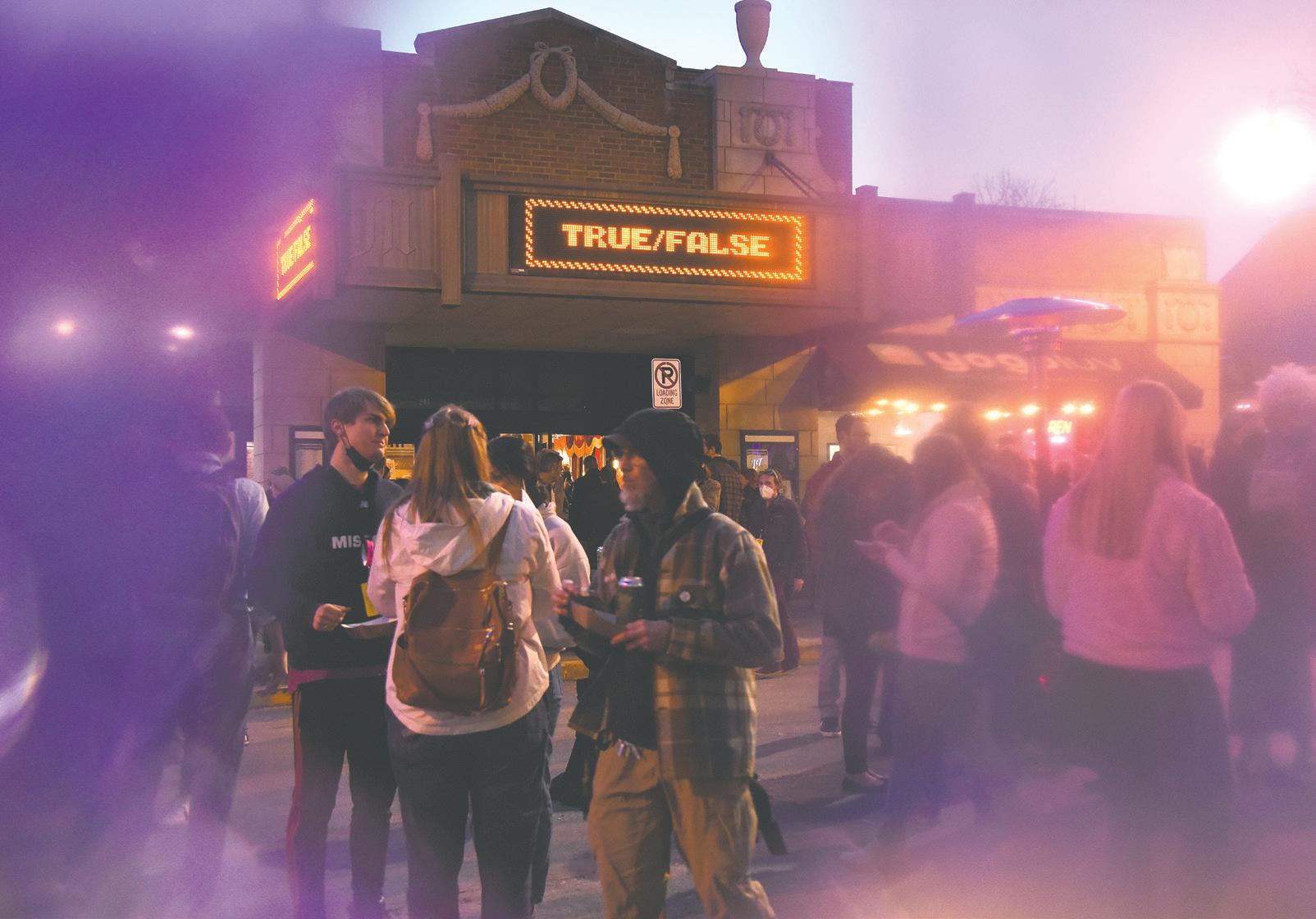
Head over to Toasty Goat Coffee Co. for a night of coffee and calligraphy. Participants will receive their own beginner’s calligraphy kit and learn how to do modern calligraphy. 5:30–7 p.m., March 29, Toasty Goat Coffee Co., $65, 607-9015
The Columbia Public Library will host Columbia School Board and Columbia City Council candidates in preparation for the April 4 election. The event is co-sponsored by the Columbia Public Library and League of Women Voters. Community members can attend in person or virtually through Zoom. 6:30 p.m., March 7, in-person at Columbia Public Library Friends Room and virtually on Zoom at events.dbrl.org
Attend the free STEM Cubs half-day camp for K-5 and middle school students.
The program includes learning about scientific concepts, connecting with scientists and hands-on experiments. 9 a.m. to noon and 1–4 p.m., March 11, Townsend Hall (for K-5 students) and Lafferre Hall (for middle students)
Searching for a unique date? The PopUp Park Picnic is an opportunity to bring your loved one along for a self-guided night of digital activities to watch the sunset and enjoy a meal together. All you need is your mobile device to connect to your Digital Date Nite Box, and you’re ready for a romantic time. Anytime 10 a.m. to 4 p.m., March 2, Perry Phillips Park
In this course, children ages 7 to 15 and an accompanying adult can work together to create a full meal. Afterward, participants sit down with other pairs to enjoy the food they just created.

The event is put together by Back 2 Basics Cooking. 3-5:15 p.m., March 25, 500 E. Walnut St. Suite 109, $115
Hosted by The Blue Note, True/False Music will host an afterparty with DJ Jessy Lanza, who specializes in dance/electronic music. Tickets can be purchased online or at The Blue Note box office while tickets remain. 10:30 p.m., March 2, The Blue Note, $25–$30, 874-1944
The Blue Note presents Emo Night Brooklyn, a late-night DJ-based dance party blasting all your favorite emo and pop punk jams. Get ready to scream your lungs out to all of your favorite songs. 9 p.m., March 11, The Blue Note, $15-$25, thebluenote.com, 874-1944
To celebrate Women’s History Month in March, The Blue Note and Sergel Music Studio have teamed up to provide a platform for women and non-binary musicians. Musicians performing at this all-ages event include locals Rochara Knight and the Honey Doves and Rae Fitzgerald, as well as Cemone James, who will also be performing during the True/False Film Fest. 4 p.m., March 18, The Blue Note, $15–$25, thebluenote.com, 874-1944

Join the Columbia Community Band for its annual Winds of March concert. Welcome the upcoming spring season with an evening of live symphonic music. 4 p.m., March 19, Hickman High School auditorium, free, 446-2263
All aboard! See a wide variety of displays involving trains and the early days of transportation as seen through movies and photographs on rail travel. The show is hosted by Mid-Mo Railfans and Columbia Parks and Recreation. 10 a.m. March 18, Pacquin Tower, free, 874-2489
Columbia is participating in this statewide activity in support of Special Olympics Missouri. If you don’t mind the cold and are up for an extreme challenge, take the plunge into the Bass Pro Shops Lake. 10 a.m. to 1 p.m., March 11, Bass Pro Shops, $10, somo. org/plunge, 635-1660
EVERY MORNING MY HUMAN SHAVES OFF HIS FACE FUR, HE’S FUNNY LIKE THAT.
Harlan, an 11-year-old Great Pyrenees, was the epitome of an MU celebrity. Whenever Harlan was spotted on campus, the news would quickly spread. Students would rush between classes to pet the gentle giant at Speakers Circle. He could also be seen during his afternoon strolls around the Quad, posing for pictures or calmly waiting to make someone’s day. On Feb. 7, Harlan’s owner, Cris Woods, announced that the city’s furriest friend had died. Immediately, the Columbia community memorialized Harlan on social media. “Harlan had endless patience, an infectious smile and a heart outweighed only by that iconic polar bear-worthy coat,” alumna Nancy Coleman tweeted from New York. Fellow MU celebrity Derrick Fogle, aka Hacky Sack Man, tweeted a video of the two and wrote: “Harlan king of Speakers Circle! You will forever be my king!” MU students created a memorial at Speakers Circle on Feb. 8 (above) as a farewell to the beloved dog. No matter how hectic life got, Harlan was always there ready to bring a smile to your face.
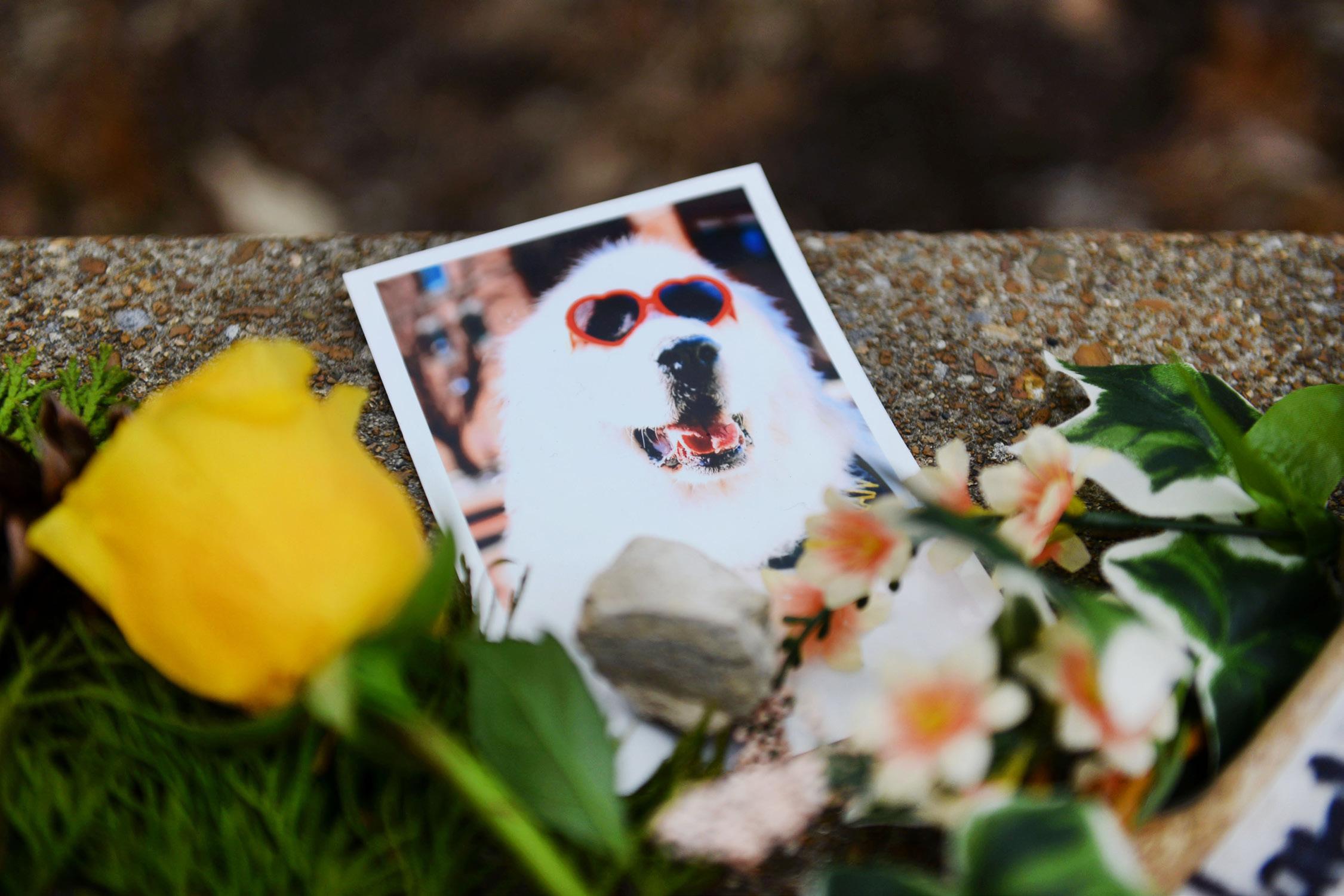
“A four-day celebration of art, music, and film, transforming downtown Columbia into a one-of-a-kind creative wonderland.”


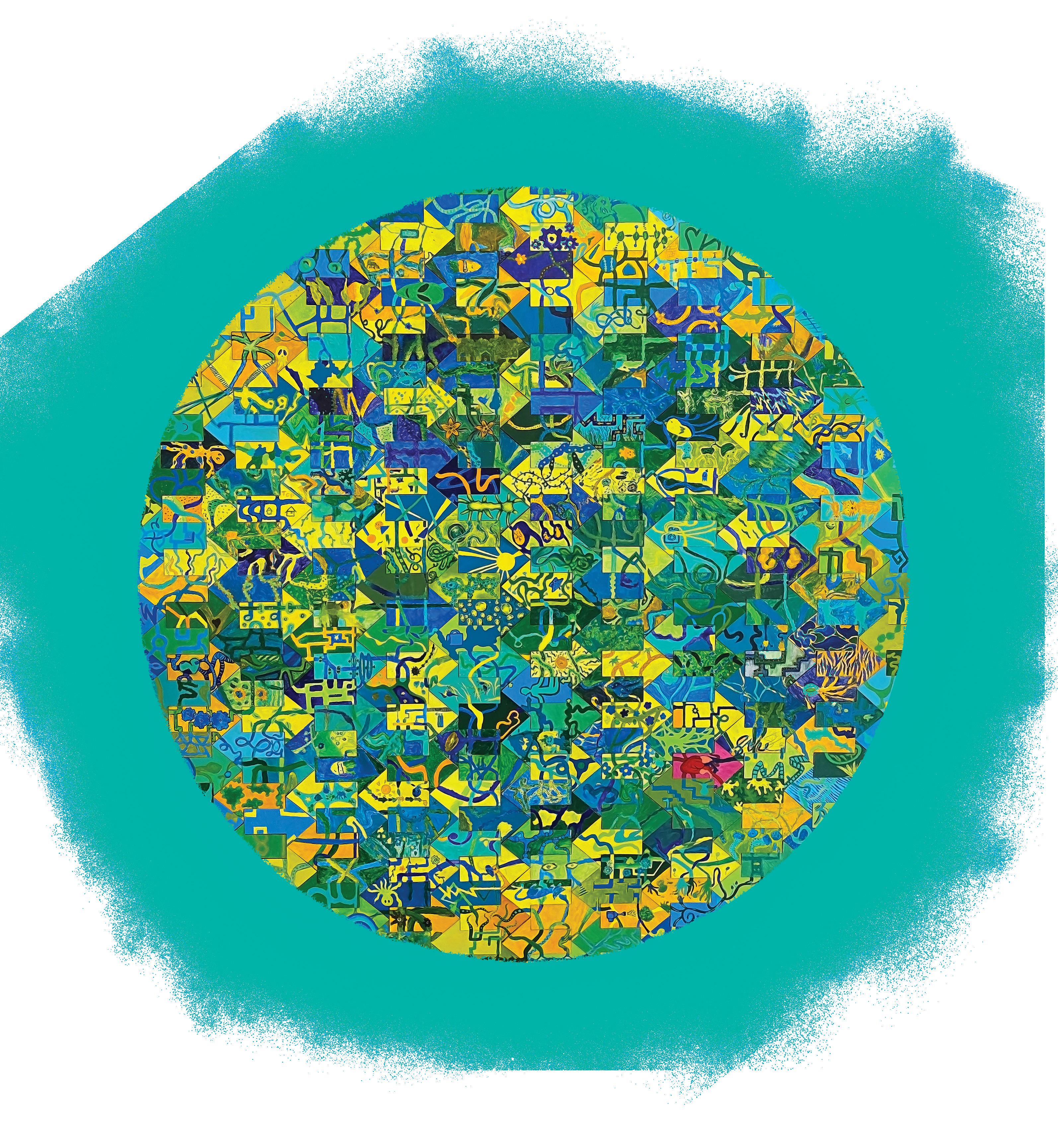

PASSES ON SALE NOW! TRUEFALSE.ORG
